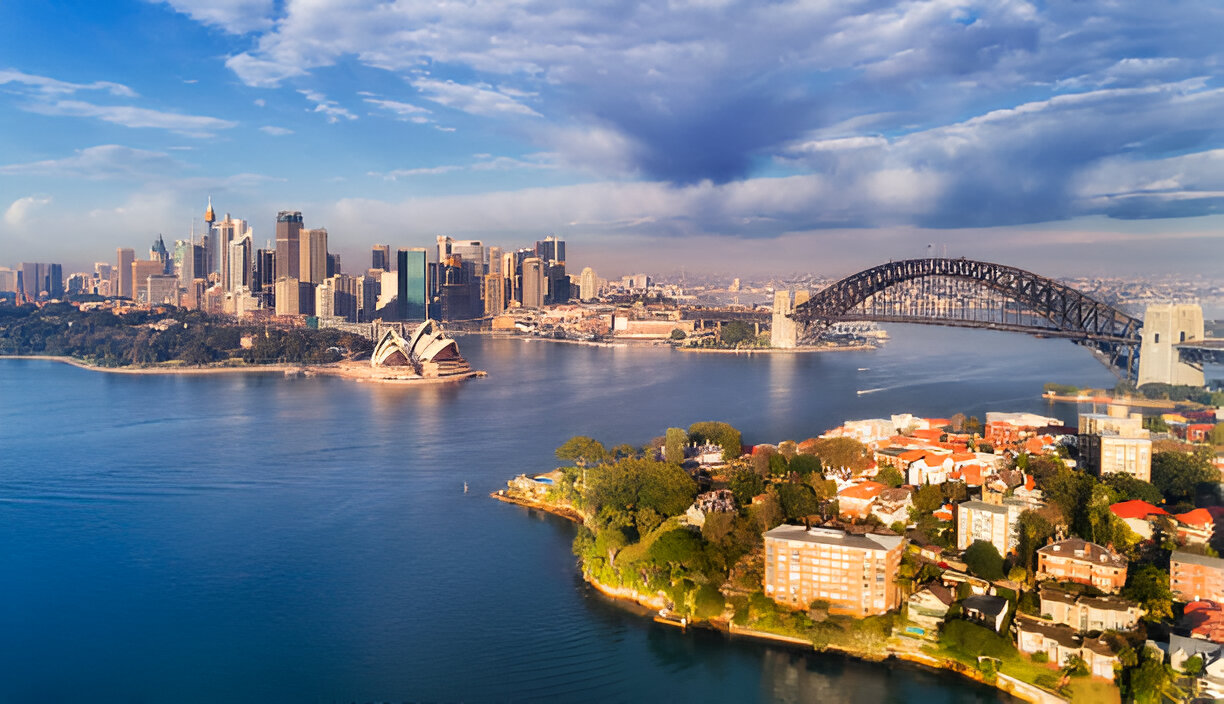Australia’s diverse climate and landscapes make it a prime destination for year-round travel. But when July rolls around, the land Down Under offers a unique blend of tropical warmth in the north and snowy wonderlands in the south. Whether you’re chasing the sun or eager to embrace winter, Australia in July is packed with experiences that cater to every traveller. Let’s explore the best places during this cool, crisp month.
Cairns, Queensland: Gateway to the Great Barrier Reef
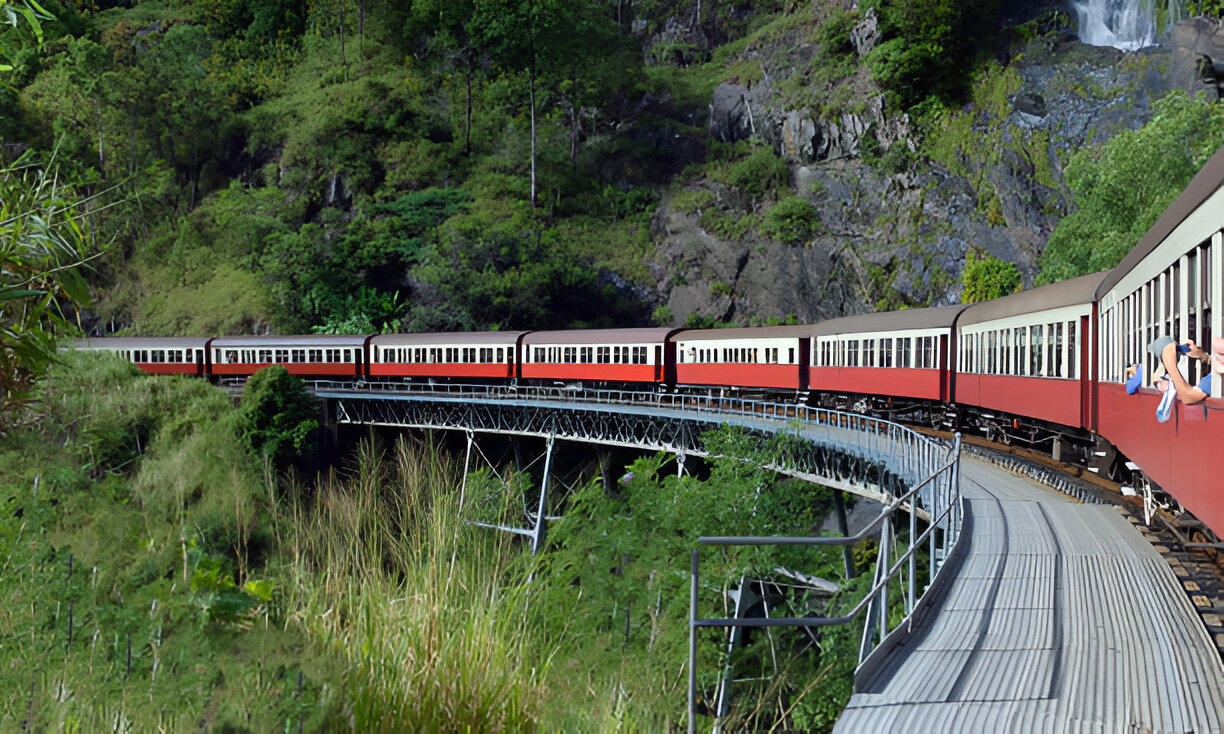
Top Attractions
Cairns Airport is the main gateway to the region, with direct flights from major Australian cities and various international destinations. Once you land, you can easily get around with car hire, taxis, or the reliable public transport system.
While the southern parts of Australia cool down, Cairns in Queensland stays warm and inviting. July is the dry season, offering clear skies and perfect conditions for exploring the Great Barrier Reef. Snorkelling, scuba diving, or a scenic flight over the reef will leave you in awe of its vibrant coral and marine life.
Must-See Attractions
Great Barrier Reef: No trip to Cairns is complete without exploring the Great Barrier Reef. Whether you’re a seasoned diver or a snorkelling newbie, the reef’s vibrant coral gardens and diverse marine life promise an unforgettable experience. Numerous tours depart from the Cairns Marina, offering everything from glass-bottom boat rides to full-day diving expeditions.
Daintree Rainforest: Step into one of the world’s oldest rainforests and be amazed by its lush greenery and unique wildlife. The Daintree offers plenty of walking trails, guided tours, and the chance to learn about the rich Indigenous culture of the area. Don’t miss the awe-inspiring Mossman Gorge and the Daintree Discovery Centre.
Cairns Esplanade: The Esplanade is the beating heart of Cairns. This waterfront precinct features a swimming lagoon, BBQ facilities, playgrounds, and plenty of open space for picnicking and relaxation. Stroll along the boardwalk, grab a bite at one of the many cafes, or simply enjoy the tropical atmosphere.
Adventure Activities
For adrenaline junkies, Cairns is a dream come true. There’s no shortage of thrills, from white-water rafting on the Tully River to bungee jumping, skydiving, and hot air ballooning. The surrounding areas also offer excellent hiking opportunities, with the Crystal Cascades and Walsh’s Pyramid being popular spots.
Where to Eat
Cairns’ dining scene is as diverse as its attractions. Fresh seafood is a highlight, with many waterfront restaurants offering the catch of the day. The night markets are a great place to sample local delicacies and pick up some unique souvenirs. Don’t miss trying a traditional Aussie meat pie or indulging in tropical fruits like mangoes and lychees.
Accommodation
From luxury resorts to budget-friendly hostels, Cairns caters to all types of travellers. The city centre is packed with hotels, while Palm Cove and Port Douglas offer a more secluded, upmarket experience. For a unique stay, consider booking a rainforest retreat or a beachfront bungalow.
Practical Tips for best places to travel in Australia in July
Climate: Cairns has a tropical climate, so pack light, breathable clothing and be prepared for humidity. The wet season runs from November to April, bringing heavy rains and potential cyclones, while the dry season from May to October is ideal for outdoor activities.
Reef Safety: Always follow the guidelines provided by tour operators to protect the reef and its inhabitants. Use reef-safe sunscreen and avoid touching the coral.
Wildlife: Be mindful of wildlife, especially crocodiles in certain areas. Stick to designated swimming spots and heed local warnings.
Must-Do Activities:
- Great Barrier Reef snorkelling and diving tours
- Visit the Daintree Rainforest, the world’s oldest tropical rainforest
- Take the Skyrail Rainforest Cableway over Kuranda
Whitsundays, Queensland: One of the Best Places to Travel in Australia in July
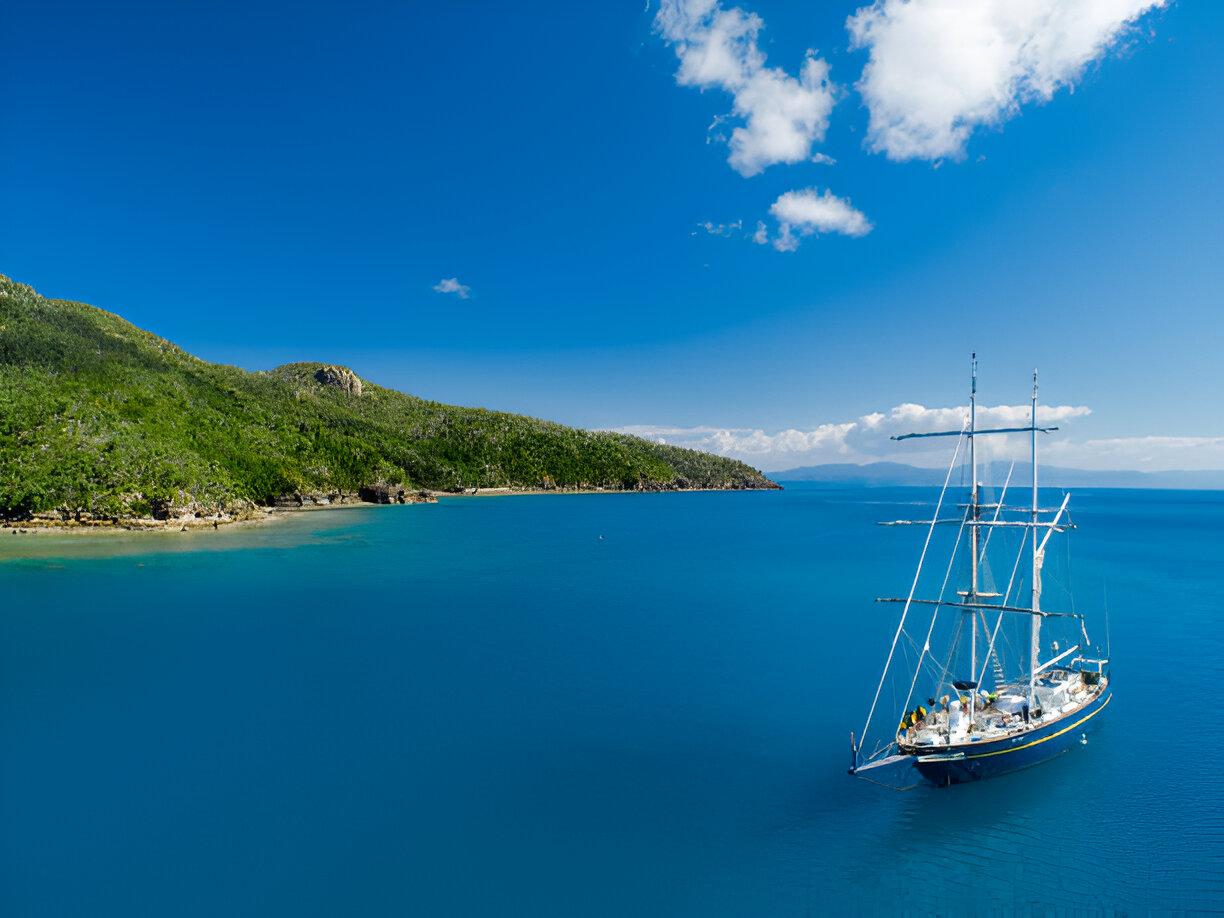
Most visitors fly into Hamilton Island or Proserpine Airport (Whitsunday Coast Airport), with regular flights from major Australian cities. From there, ferries, boats, and charter flights can take you to your island of choice.
If you’re dreaming of white sandy beaches and turquoise waters, the Whitsundays are your July paradise. With mild temperatures and minimal rainfall, it’s the ideal time to sail around these 74 islands. It’s one of the best places to travel in Australia in July!
Top Attractions
Whitehaven Beach: Consistently ranked as one of the world’s best beaches, Whitehaven Beach is famous for its pure white silica sand and crystal-clear waters. The swirling sands of Hill Inlet at the northern end of the beach create a stunning mosaic that’s best viewed from a lookout or a scenic flight.
Great Barrier Reef: The Whitsundays are ideally located for exploring the Great Barrier Reef. Snorkelling and diving trips reveal an underwater paradise filled with colourful corals and diverse marine life. Day trips to the outer reef, such as the renowned Heart Reef, are a must.
Activities and Adventures
For the adventurous, the Whitsundays offer a variety of thrilling activities:
Sailing: Charter a yacht or join a sailing tour to explore the islands at your own pace. The sheltered waters make it an ideal spot for both novice and experienced sailors.
Snorkelling and Diving: Discover the vibrant underwater world around the islands. The fringing reefs around Hook and Hayman Islands are particularly popular.
Bushwalking: The islands offer numerous walking tracks that lead through lush rainforests to secluded beaches and stunning viewpoints. The Whitsunday Ngaro Sea Trail is a notable trek that combines walking and kayaking.
Luxury and Relaxation
For those seeking luxury and relaxation, the Whitsundays do not disappoint:
Island Resorts: Hamilton Island, Daydream Island, and Hayman Island offer top-notch resorts with luxury accommodations, spas, and fine dining. Enjoy a sunset cocktail by the pool or indulge in a rejuvenating spa treatment.
Secluded Retreats: For a more intimate experience, consider staying in a secluded beach bungalow or a rainforest retreat.
Cultural Insights
The Whitsundays hold significant cultural heritage for the Ngaro people, one of the oldest Indigenous groups in Australia. Explore ancient rock art sites and join cultural tours to learn about their history and traditions.
Sustainable Tourism
Efforts to protect the natural beauty of the Whitsundays are evident in the region’s commitment to sustainable tourism. Visitors are encouraged to follow eco-friendly practices, such as using reef-safe sunscreen and respecting marine life.
Must-Do Activities:
- Sailing through the Whitsunday Islands
- Relaxing on Whitehaven Beach
- Snorkelling in the fringing reefs of the Great Barrier Reef
Darwin, Northern Territory: A Cultural and Natural Hotspot
Darwin in July is all about warm weather and exciting festivals. The city comes alive with the Darwin Festival, featuring art, music, and food from diverse cultures.
Darwin International Airport is the main gateway to the city, with regular flights from major Australian cities and some international destinations. Once you arrive, you can easily get around by car, bus, or even bicycle, thanks to the city’s compact layout and well-connected transport system.
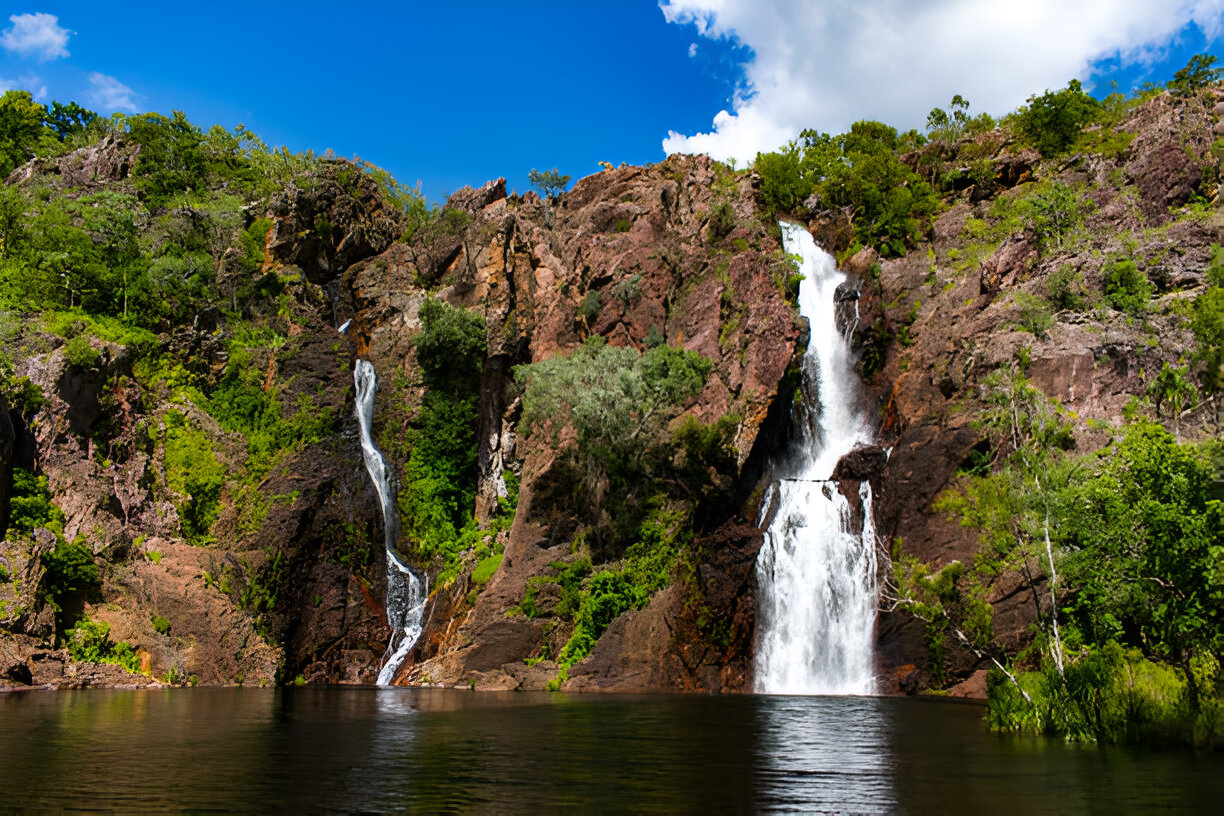
Must-See Attractions
Mindil Beach Sunset Market: Held every Thursday and Sunday evening during the dry season, the Mindil Beach Sunset Market is a must-visit. Enjoy a diverse range of food stalls, arts and crafts, live music, and breathtaking sunsets over the Timor Sea. It’s the perfect spot to soak in the local atmosphere.
Kakadu National Park: Just a few hours’ drive from Darwin, Kakadu National Park is a UNESCO World Heritage site renowned for its stunning landscapes, rich Aboriginal culture, and diverse wildlife. Explore ancient rock art sites, take a cruise on the Yellow Water Billabong, or hike to scenic lookouts for panoramic views.
Museum and Art Gallery of the Northern Territory (MAGNT): This museum offers a fascinating insight into the region’s history, culture, and natural environment. Highlights include the Cyclone Tracy exhibit, which recounts the devastating 1974 cyclone, and the impressive collection of Aboriginal art.
Crocodylus Park: Get up close and personal with some of Australia’s most famous residents at Crocodylus Park. Home to over 1,000 crocodiles, the park offers guided tours, feeding demonstrations, and the chance to learn about these incredible reptiles.
Adventure Activities at Best Places to Travel in Australia in July
Darwin is a paradise for adventure enthusiasts. Try your hand at:
- Fishing: The waters around Darwin are teeming with fish, making it a popular destination for anglers. Barramundi fishing is a highlight, with guided tours available for both beginners and experienced fishers.
- Litchfield National Park: Just a short drive from Darwin, Litchfield National Park is known for its stunning waterfalls, crystal-clear swimming holes, and magnetic termite mounds. It’s a great spot for hiking, camping, and cooling off in the natural pools.
- Darwin Harbour Cruises: Explore the beauty of Darwin Harbour with a sunset cruise. Enjoy a relaxing evening on the water, complete with gourmet food, drinks, and stunning views of the city skyline.
Where to Eat
Darwin’s dining scene is as diverse as its population, offering a wide range of cuisines to suit every palate. Fresh seafood is a highlight, with many restaurants serving up locally caught barramundi, mud crabs, and prawns. The Darwin Waterfront Precinct is a popular spot for dining, featuring a variety of cafes, bars, and restaurants with views of the water.
Accommodations at the Best Places to Travel in Australia in July
From luxury hotels to budget-friendly hostels, Darwin has accommodation options to suit all travellers. The city centre is a convenient base for exploring the local attractions, while the Darwin Waterfront Precinct offers a more relaxed, resort-like experience.
Practical Tips
- Climate: Darwin has a tropical climate with two distinct seasons: the wet season (November to April) and the dry season (May to October). The dry season is the most popular time to visit, with warm, sunny days and low humidity.
- Crocodile Safety: Always be aware of crocodile warnings and follow local advice when swimming or fishing. Stick to designated swimming areas and exercise caution near waterways.
Must-Do Activities:
- Explore Kakadu National Park, rich with Aboriginal culture and stunning landscapes
- Visit Mindil Beach Sunset Market
- Cruise along the Adelaide River to see the famous jumping crocodiles
Broome, Western Australia: Camel Rides and Cable Beach Sunsets
Broome is a top destination in July, with perfect weather and unique experiences. The iconic Cable Beach sunsets are best enjoyed on a camel ride, while the nearby Horizontal Falls offer a thrilling adventure.
Broome is accessible by air, with flights from major Australian cities such as Perth, Sydney, and Melbourne. Broome International Airport is just a short drive from the town centre. For those who enjoy road trips, Broome can also be reached by driving along the Great Northern Highway, offering a scenic journey through the Kimberley region.
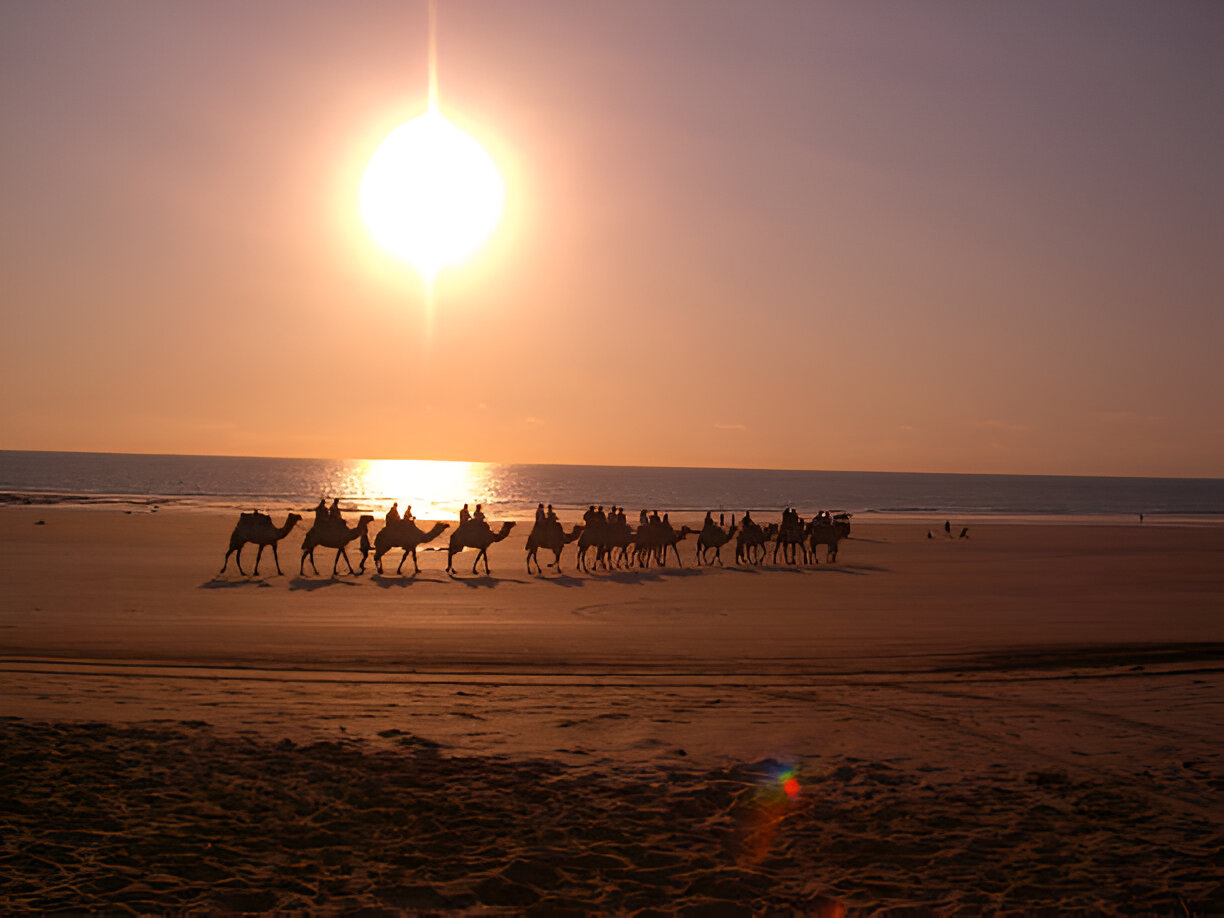
Top Attractions
Cable Beach: This iconic 22-kilometre stretch of white sand and turquoise water is one of Broome’s most famous attractions. Known for its breathtaking sunsets, Cable Beach is the perfect spot for swimming, sunbathing, and beachcombing. Don’t miss the opportunity to take a camel ride along the beach at sunset for a truly memorable experience.
Gantheaume Point: Just a short drive from Broome, Gantheaume Point offers stunning coastal views and unique rock formations. At low tide, you can spot 130-million-year-old dinosaur footprints embedded in the rocks. The point is also home to a picturesque lighthouse and is a great spot for whale watching during the migration season.
Willie Creek Pearl Farm: Discover Broome’s pearling history with a visit to Willie Creek Pearl Farm. Learn about the process of cultivating pearls, take a guided tour, and even try your hand at harvesting a pearl. The farm also offers scenic boat cruises and a chance to shop for exquisite pearl jewellery.
Adventure Activities
For adventure seekers, Broome has plenty to offer:
- Horizontal Falls: Experience the natural wonder of the Horizontal Falls with a seaplane or boat tour. Witness the powerful tidal currents that create a waterfall effect in the narrow gorges of the Kimberley region.
- Broome Hovercraft: Explore the tidal flats and marine life of Roebuck Bay with a unique hovercraft tour. Marvel at the ancient dinosaur footprints and enjoy the spectacular scenery.
- Fishing: Broome’s waters are teeming with fish, making it a popular destination for anglers. Join a fishing charter to try your luck at catching barramundi, threadfin salmon, and other local species.
Cultural Insights
Broome’s rich cultural heritage is evident in its diverse population and historic sites:
- Chinatown: Once the bustling heart of Broome’s pearling industry, Chinatown is now a vibrant area filled with shops, galleries, and restaurants. Explore the historic buildings and learn about Broome’s multicultural past.
- Broome Historical Museum: Delve into the town’s history at the Broome Historical Museum. Exhibits cover topics such as the pearling industry, World War II, and the Indigenous heritage of the area.
Where to Eat
Broome offers a variety of dining options to suit all tastes:
- Matso’s Brewery: Enjoy a cold beer and a delicious meal at this iconic Broome brewery. Matso’s is known for its unique range of craft beers, including the famous Mango Beer and Ginger Beer.
- The Aarli: This popular restaurant offers a fusion of Asian and Australian cuisine, with a focus on fresh, local ingredients. The outdoor seating area is perfect for a relaxed dining experience.
Accommodation
From luxury resorts to budget-friendly accommodations, Broome has something for everyone. Cable Beach Club Resort & Spa is a top choice for those seeking a luxurious stay, while backpackers and budget travellers will find plenty of options in the town centre.
Practical Tips
- Climate: Broome has a tropical climate with two distinct seasons: the dry season (May to October) and the wet season (November to April). The dry season is the most popular time to visit, with warm, sunny days and low humidity.
- Sun Protection: The sun in Broome can be intense, so be sure to pack sunscreen, a hat, and sunglasses to protect yourself.
Must-Do Activities:
- Camel ride along Cable Beach at sunset
- Witness the natural phenomenon, Staircase to the Moon
- Explore Gantheaume Point’s dinosaur footprints
Blue Mountains, New South Wales: A Winter Escape Near Sydney
Just a short drive from Sydney, the Blue Mountains in New South Wales offer a stunning escape into nature. This UNESCO World Heritage-listed region is renowned for its dramatic scenery, ancient forests, and charming towns, making it a perfect destination for adventurers, nature lovers, and history buffs alike.
The Blue Mountains are easily accessible by car or train from Sydney. A scenic drive along the Great Western Highway will take you to the heart of the region, while regular train services from Sydney Central Station provide a relaxing and picturesque journey.
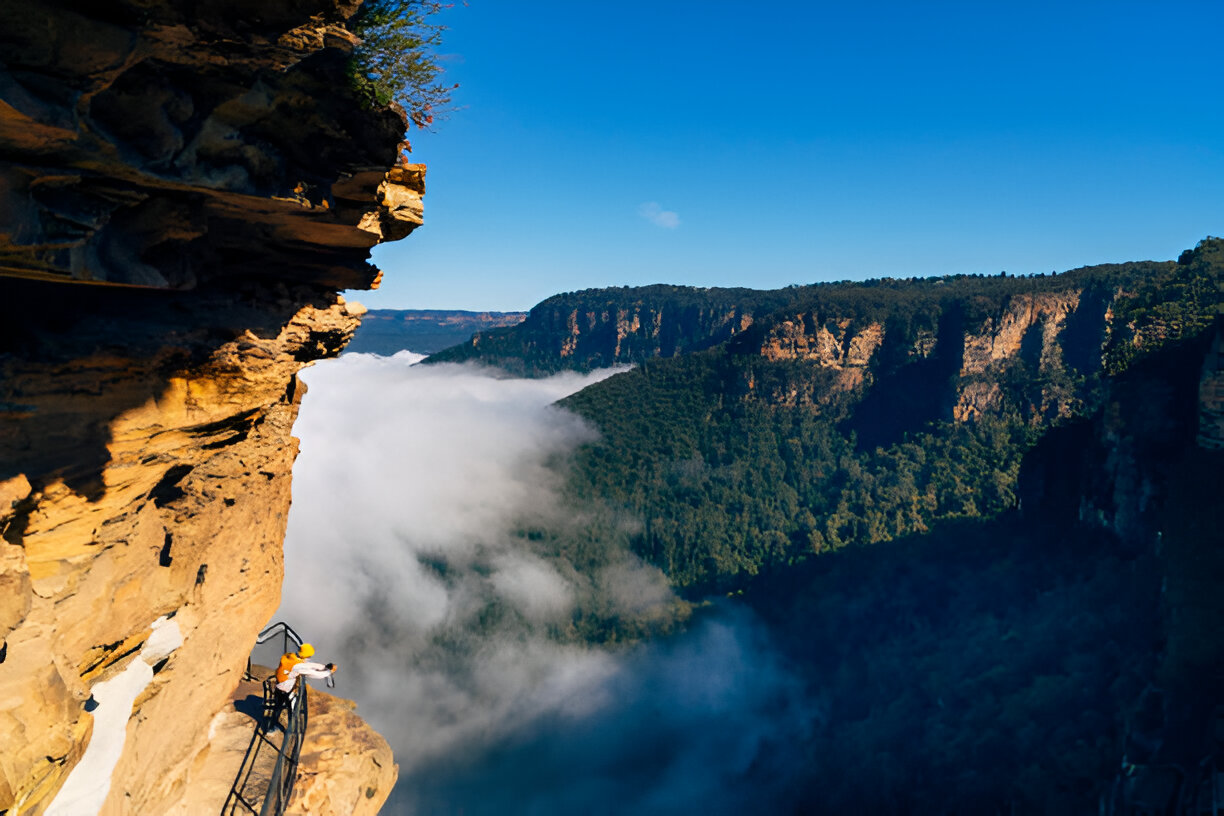
Top Attractions
Three Sisters: One of the most iconic landmarks in the Blue Mountains, the Three Sisters is a rock formation that towers over the Jamison Valley. The best views can be enjoyed from Echo Point Lookout in Katoomba. According to Aboriginal legend, the Three Sisters were once three sisters turned to stone by a witch doctor to protect them from harm.
Scenic World: For a unique perspective of the Blue Mountains, head to Scenic World in Katoomba. The Scenic Skyway, Scenic Railway, and Scenic Cableway offer breathtaking views of the valleys, cliffs, and rainforest. The Scenic Walkway, a 2.4-kilometre boardwalk through the lush forest, is perfect for a leisurely stroll.
Jenolan Caves: Explore the ancient limestone caves of Jenolan, some of the oldest and most spectacular in the world. Guided tours take you through awe-inspiring formations, underground rivers, and crystal-clear pools. The caves also feature the enchanting Chifley and Lucas caves, known for their stunning light displays.
Adventure Activities
The Blue Mountains are a haven for outdoor enthusiasts:
- Bushwalking and Hiking: The region boasts an extensive network of walking tracks, ranging from easy strolls to challenging hikes. Popular trails include the Wentworth Falls track, the Grand Canyon Walk, and the Ruined Castle hike.
- Abseiling and Rock Climbing: For adrenaline seekers, the Blue Mountains offer some of the best abseiling and rock climbing opportunities in Australia. Guided tours are available for all skill levels.
- Mountain Biking: Explore the region’s rugged terrain on two wheels with a variety of mountain biking trails suitable for all levels of experience.
Cultural and Historical Sites
- Leura: This charming village is known for its picturesque gardens, boutique shops, and cafes. The Everglades Historic House and Gardens is a highlight, showcasing stunning Art Deco design and beautiful landscapes.
- Mount Tomah Botanic Garden: Located in the northern Blue Mountains, the Mount Tomah Botanic Garden offers a diverse collection of cool-climate plants and stunning views of the surrounding landscape.
- Aboriginal Cultural Experiences: Learn about the rich cultural heritage of the local Aboriginal people with guided tours and cultural experiences that offer insights into traditional practices, stories, and connections to the land.
Where to Eat
The Blue Mountains offer a range of dining options to suit all tastes:
- Darley’s Restaurant: Located in the historic Lilianfels Resort, Darley’s offers fine dining with a focus on seasonal and locally sourced ingredients.
- Megalong Valley Tea Rooms: Enjoy a traditional Devonshire tea with scones, jam, and cream while taking in the serene countryside views.
- Blackheath: This village is known for its vibrant food scene, with numerous cafes, pubs, and restaurants offering everything from gourmet meals to hearty pub fare.
Accommodation
From luxury retreats to cosy bed and breakfasts, the Blue Mountains have accommodation options to suit all travellers. Lilianfels Resort and Spa, the Carrington Hotel, and Wolgan Valley Resort are top choices for those seeking a luxurious stay, while budget-friendly options are available in Katoomba and Leura.
Practical Tips
- Climate: The Blue Mountains have a cooler climate than Sydney, so pack layers and be prepared for varying weather conditions. Winter can be quite cold, with occasional snowfall.
- Safety: When bushwalking, always stay on marked trails and carry sufficient water, food, and a map. Mobile reception can be limited in some areas, so inform someone of your plans before heading out.
Must-Do Activities:
- Explore the Three Sisters rock formation at Echo Point
- Take a ride on the Scenic Railway, the steepest railway in the world
- Warm up in a local café with a hot chocolate or mulled wine
Melbourne, Victoria: Embrace the Winter Vibes
Melbourne’s cosmopolitan charm shines in winter. The city’s laneways, filled with hidden bars and cafes, offer a warm refuge, while the surrounding areas boast winter activities like skiing and hot springs.
Melbourne is easily accessible via Melbourne Airport (Tullamarine), which serves both domestic and international flights. The SkyBus service provides a convenient connection between the airport and the city centre. Additionally, Melbourne’s extensive public transport network, including trams, trains, and buses, makes it easy to get around the city.
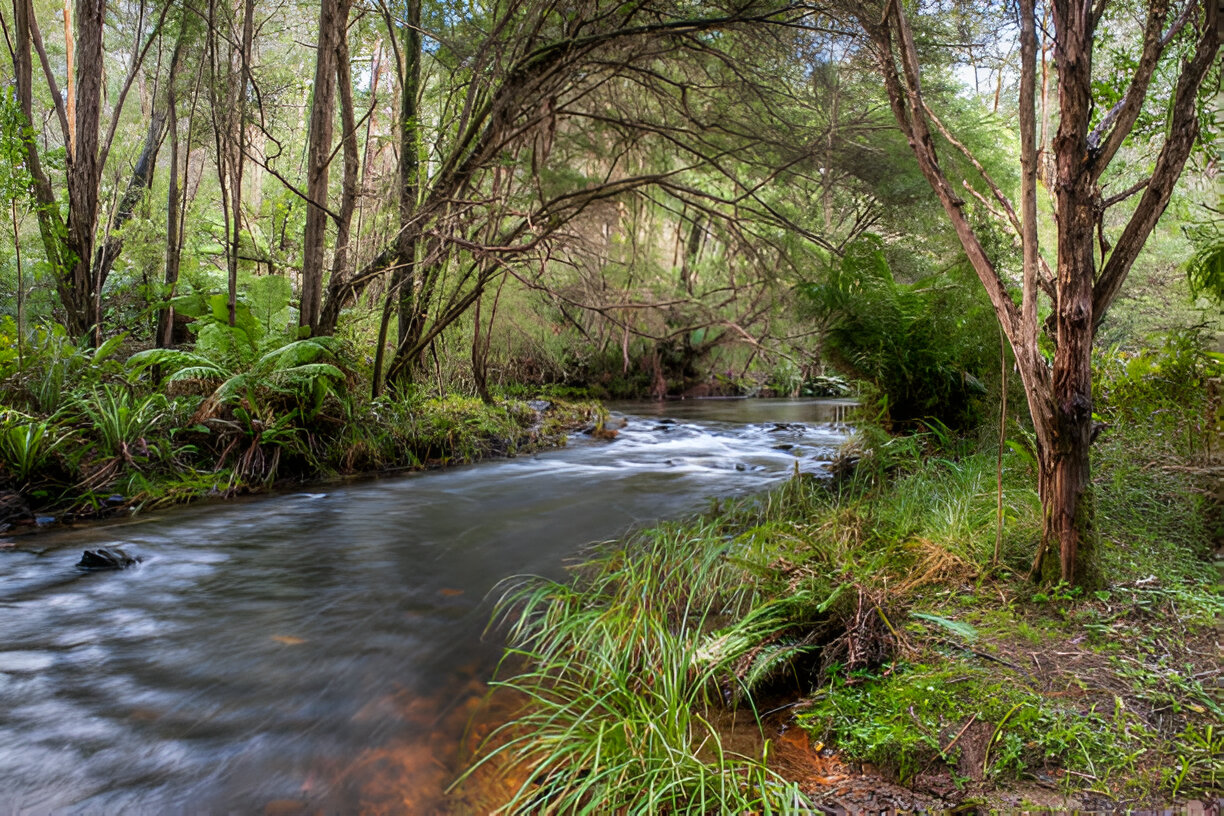
Top Attractions
Federation Square: This iconic public space in the heart of Melbourne is home to world-class galleries, museums, and performance spaces. Explore the Australian Centre for the Moving Image (ACMI) and the Ian Potter Centre: NGV Australia, or simply relax in one of the many cafes and restaurants.
Royal Botanic Gardens: An oasis of tranquility in the midst of the city, the Royal Botanic Gardens offer a stunning array of plant collections, beautiful landscapes, and serene walking paths. The gardens are perfect for a leisurely stroll, a picnic, or a guided tour to learn about the diverse flora.
Queen Victoria Market: Dive into the vibrant atmosphere of the Queen Victoria Market, a historic landmark offering a wide range of fresh produce, gourmet foods, unique souvenirs, and more. The market’s Night Market, held during the summer months, is a popular spot for food, music, and entertainment.
Melbourne’s Laneways: Melbourne’s laneways are renowned for their street art, hidden bars, and boutique shops. Take a walk down Hosier Lane to see some of the city’s best street art, or explore the hidden gems of Degraves Street and Centre Place.
Cultural Experiences
Melbourne’s cultural scene is thriving, with numerous festivals, performances, and exhibitions throughout the year:
- Melbourne International Arts Festival: Held annually in October, this festival showcases a diverse range of performances, including theatre, dance, music, and visual arts.
- National Gallery of Victoria (NGV): Australia’s oldest and most visited public art museum, the NGV houses an extensive collection of art from around the world, including contemporary and Indigenous Australian works.
- Melbourne’s Theatres: From the historic Princess Theatre to the modern Arts Centre Melbourne, the city’s theatres host a wide range of performances, including musicals, plays, and opera.
Dining and Nightlife
Melbourne is a food lover’s paradise, with a diverse culinary scene influenced by its multicultural population:
- Lygon Street: Known as Melbourne’s Little Italy, Lygon Street is lined with Italian restaurants, cafes, and gelaterias offering delicious pasta, pizza, and desserts.
- Chinatown: Melbourne’s Chinatown is the oldest in Australia and offers a wide range of Chinese and Asian cuisine, from traditional dim sum to modern fusion dishes.
- Brunch Spots: Melbourne’s cafe culture is second to none, with countless cafes serving up delicious brunches, specialty coffee, and freshly baked pastries. Popular spots include Proud Mary, Top Paddock, and Hardware Societe.
Sports and Recreation
Melbourne is a sports-loving city with numerous events and facilities for sports enthusiasts:
- Melbourne Cricket Ground (MCG): One of the world’s most iconic sports stadiums, the MCG hosts cricket matches, Australian Rules Football games, and major events such as the Boxing Day Test.
- Albert Park: Located just outside the city centre, Albert Park is home to the Australian Grand Prix and offers a range of recreational activities, including walking, cycling, and boating.
- Yarra River: The Yarra River offers opportunities for rowing, kayaking, and scenic river cruises, providing a unique perspective of the city.
Accommodation
Melbourne offers a wide range of accommodation options to suit all budgets and preferences:
- Luxury Hotels: For a luxurious stay, consider booking a room at the Crown Towers, The Langham, or the Grand Hyatt.
- Boutique Hotels: Melbourne is home to numerous boutique hotels, offering stylish and unique accommodations. The Adelphi Hotel and The Olsen are popular choices.
- Budget Options: For budget-conscious travellers, there are plenty of hostels, budget hotels, and serviced apartments available in the city centre and surrounding suburbs.
Practical Tips
- Weather: Melbourne is known for its unpredictable weather, often experiencing “four seasons in one day.” Be sure to pack layers and be prepared for sudden changes in temperature.
- Transport: Melbourne’s public transport system is efficient and easy to navigate. Consider purchasing a Myki card for unlimited travel on trams, trains, and buses.
Must-Do Activities:
- Visit the Queen Victoria Winter Night Market
- Day trip to the Yarra Valley for wine tasting
- Head to Mt Buller for a skiing adventure
Hobart, Tasmania: A Cool Capital with Warm Hospitality
Tasmania’s capital is a haven for winter travellers seeking rich history and natural beauty. July is the perfect time to experience the Dark Mofo festival, which celebrates winter solstice with art, food, and music.
Hobart is accessible via Hobart International Airport, with regular flights from major Australian cities and some international destinations. The city centre is just a short drive from the airport, and you can get around easily by car, bus, or bicycle.
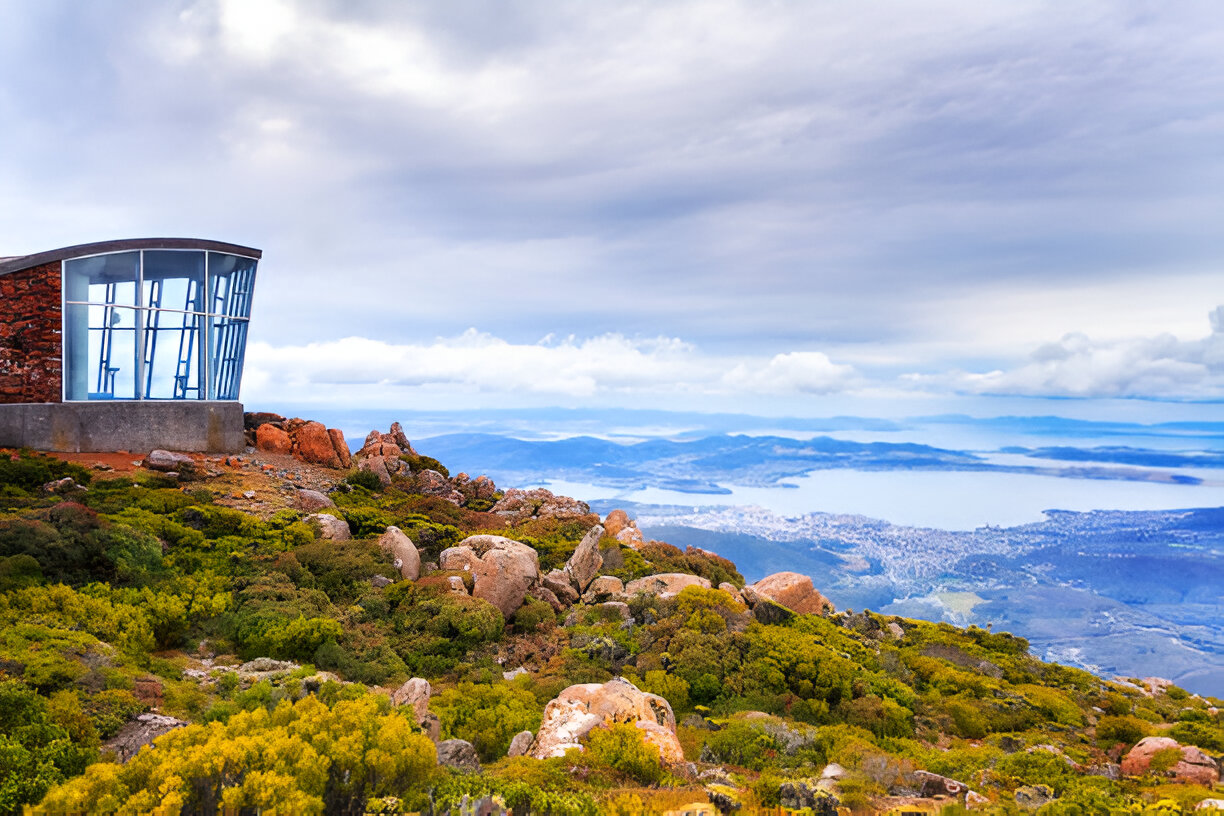
Top Attractions
Salamanca Place: Located on Hobart’s waterfront, Salamanca Place is a bustling precinct known for its historic sandstone buildings, art galleries, cafes, and boutique shops. The Salamanca Market, held every Saturday, is a must-visit, offering a wide array of local produce, crafts, and gourmet foods.
Mount Wellington: Offering panoramic views of Hobart and its surroundings, Mount Wellington is a popular spot for hiking, mountain biking, and sightseeing. The Pinnacle Lookout at the summit provides breathtaking vistas, while the walking trails through the alpine landscape offer a chance to immerse yourself in nature.
MONA (Museum of Old and New Art): A visit to Hobart wouldn’t be complete without exploring MONA, a world-renowned museum that showcases an eclectic mix of contemporary and ancient art. The museum’s bold and often provocative exhibitions make it a must-see for art enthusiasts.
Outdoor Adventures
Hobart is a gateway to many outdoor adventures:
- Bruny Island: Just a short ferry ride from Hobart, Bruny Island offers stunning coastal scenery, pristine beaches, and abundant wildlife. Explore the island’s rugged coastline, sample local gourmet produce, and take in the views from The Neck Lookout.
- Tasman Peninsula: Home to the dramatic sea cliffs and natural rock formations of the Tasman National Park, the peninsula is perfect for hiking, wildlife spotting, and exploring historic sites like the Port Arthur Historic Site.
- River Derwent: Enjoy a leisurely cruise along the River Derwent, taking in the scenic beauty of Hobart’s waterfront and the surrounding landscapes. Kayaking and fishing are also popular activities on the river.
Culinary Delights
Hobart’s dining scene is renowned for its emphasis on fresh, local produce:
- Seafood: Sample some of the best seafood in Australia, including oysters, salmon, and abalone. Mures Lower Deck and Drunken Admiral are popular choices for seafood lovers.
- Farmers Markets: Hobart’s farmers markets, such as the Farm Gate Market, offer a chance to taste and purchase local produce, from cheeses and honey to fresh fruits and vegetables.
- Craft Breweries and Distilleries: Discover Tasmania’s burgeoning craft beer and spirits scene with a visit to local breweries and distilleries like Cascade Brewery and Lark Distillery.
Accommodation
From luxury hotels to cosy bed and breakfasts, Hobart offers a range of accommodation options to suit all budgets:
- Luxury Stays: For a luxurious experience, consider staying at the Henry Jones Art Hotel or MACq 01 Hotel, both offering stunning waterfront views and top-notch amenities.
- Boutique Hotels: The Islington Hotel and The Old Woolstore Apartment Hotel provide stylish and comfortable accommodations with a unique charm.
- Budget-Friendly: For budget-conscious travellers, there are plenty of hostels and budget hotels available in the city centre and surrounding areas.
Practical Tips
- Climate: Hobart has a temperate maritime climate, with mild summers and cool winters. Be sure to pack layers and be prepared for variable weather conditions.
- Transport: Hobart is a compact city, making it easy to explore on foot or by bicycle. Public transport is also available, with buses servicing the city and surrounding areas.
Must-Do Activities:
- Explore MONA (Museum of Old and New Art)
- Wander through Salamanca Market
- Take a trip to Mount Wellington for panoramic views of Hobart
Snowy Mountains, New South Wales: Hit the Slopes
For snow lovers, the Snowy Mountains are the ultimate July destination. With resorts like Thredbo and Perisher, you can enjoy skiing, snowboarding, or simply playing in the snow.
The Snowy Mountains are accessible by car, with major highways connecting the region to Sydney, Canberra, and Melbourne. The closest airport is in Cooma, with flights from Sydney. From there, it’s a short drive to the main resorts and towns.
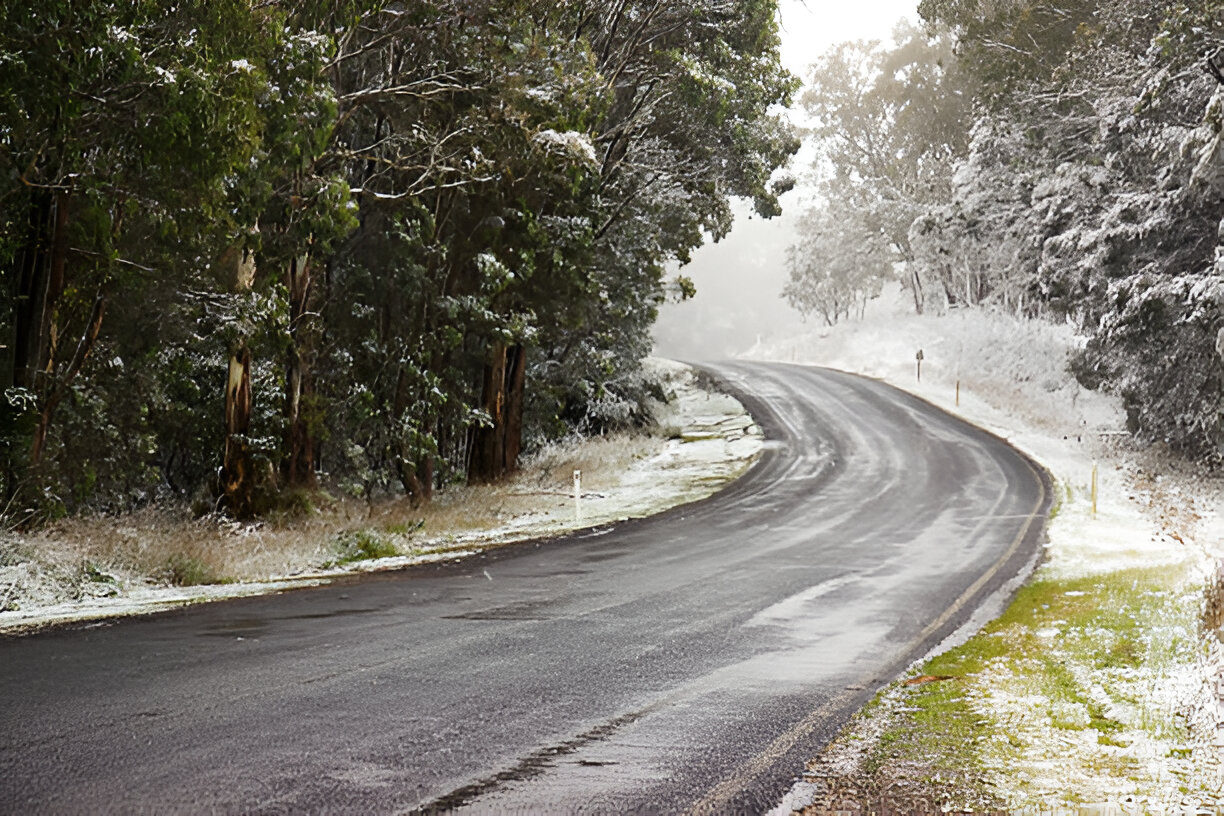
Top Attractions
Kosciuszko National Park: Home to Australia’s highest peak, Mount Kosciuszko, this national park is a haven for outdoor enthusiasts. In winter, the park transforms into a snowy paradise, offering some of the best skiing and snowboarding in the country. In summer, the park’s alpine meadows, glacial lakes, and rugged peaks provide excellent opportunities for hiking, mountain biking, and fishing.
Thredbo: A popular resort town, Thredbo is known for its extensive ski slopes, vibrant village atmosphere, and year-round activities. In winter, enjoy skiing and snowboarding on well-groomed trails, and in summer, explore the network of mountain biking and hiking trails. The scenic chairlift ride to the top of Mount Kosciuszko is a must-do.
Perisher: The largest ski resort in the Southern Hemisphere, Perisher offers a wide range of winter sports, including skiing, snowboarding, and snowshoeing. The resort’s extensive network of lifts and trails caters to all skill levels, making it a great destination for families and seasoned skiers alike.
Jindabyne: Located on the shores of Lake Jindabyne, this charming town is the gateway to the Snowy Mountains. Jindabyne offers a range of accommodation, dining, and shopping options, as well as year-round recreational activities. In summer, the lake is perfect for fishing, boating, and swimming.
Outdoor Adventures
The Snowy Mountains are a playground for outdoor enthusiasts:
- Skiing and Snowboarding: With several ski resorts, including Thredbo, Perisher, and Charlotte Pass, the Snowy Mountains offer some of the best skiing and snowboarding in Australia. The season typically runs from June to October.
- Hiking and Mountain Biking: In the warmer months, the Snowy Mountains are crisscrossed with hiking and mountain biking trails. The Main Range Walk and the Summit Walk to Mount Kosciuszko are popular choices for hikers.
- Fishing: The region’s rivers and lakes are teeming with trout, making it a popular destination for anglers. Lake Jindabyne and the Thredbo River are particularly well-known for their excellent fishing opportunities.
Cultural and Historical Sites
The Snowy Mountains have a rich cultural history, with significant sites and events:
- Snowy Hydro Discovery Centre: Learn about the Snowy Mountains Scheme, one of the most significant engineering feats in Australia, at this interactive museum in Cooma. The centre provides insight into the construction of the hydroelectric power and irrigation system that transformed the region.
- Indigenous Heritage: The Snowy Mountains are home to the Ngarigo and Walgalu people, who have lived in the region for thousands of years. Cultural tours and heritage sites offer a glimpse into their history, traditions, and connection to the land.
Where to Eat
The Snowy Mountains offer a range of dining options to suit all tastes:
- Alpine Restaurants: Enjoy hearty meals and cosy atmospheres at the region’s alpine lodges and restaurants. Wildbrumby Schnapps Distillery and Cafe in Thredbo is a popular spot for a delicious meal and a taste of locally made schnapps.
- Cafes and Pubs: Jindabyne and the resort villages have numerous cafes and pubs offering everything from gourmet meals to casual fare. Be sure to try some local delicacies, such as trout and venison.
Accommodation
From luxury lodges to budget-friendly options, the Snowy Mountains have accommodation to suit all travellers:
- Luxury Stays: For a luxurious experience, consider staying at the Lake Crackenback Resort & Spa or the Thredbo Alpine Hotel, both offering stunning views and top-notch amenities.
- Chalets and Cabins: The region has plenty of cosy chalets and cabins, perfect for a winter getaway or a summer retreat.
- Budget Options: Budget-conscious travellers will find a range of hostels, motels, and campgrounds in the area.
Practical Tips
- Weather: The Snowy Mountains experience distinct seasons, with cold, snowy winters and warm, mild summers. Be sure to pack appropriate clothing and gear for the season you visit.
- Safety: When exploring the outdoors, always stay on marked trails, carry sufficient water and food, and be prepared for changing weather conditions. In winter, ensure you have appropriate snow gear and check weather reports before heading out.
Must-Do Activities:
- Skiing and snowboarding at Thredbo or Perisher
- Take a scenic chairlift ride for breathtaking alpine views
- Warm up in a cosy lodge with a glass of mulled wine
Barossa Valley, South Australia: Wine and Winter Charm
The Barossa Valley is known for its world-class wines, and winter adds a cosy charm to the region. July is perfect for cellar door tastings, hearty meals, and fireside relaxation.
The journey to the Barossa is as enjoyable as the destination itself. Hire a car for a scenic drive through picturesque landscapes, or join one of the many guided tours that depart from Adelaide, which provide the added bonus of local insights and storytelling.
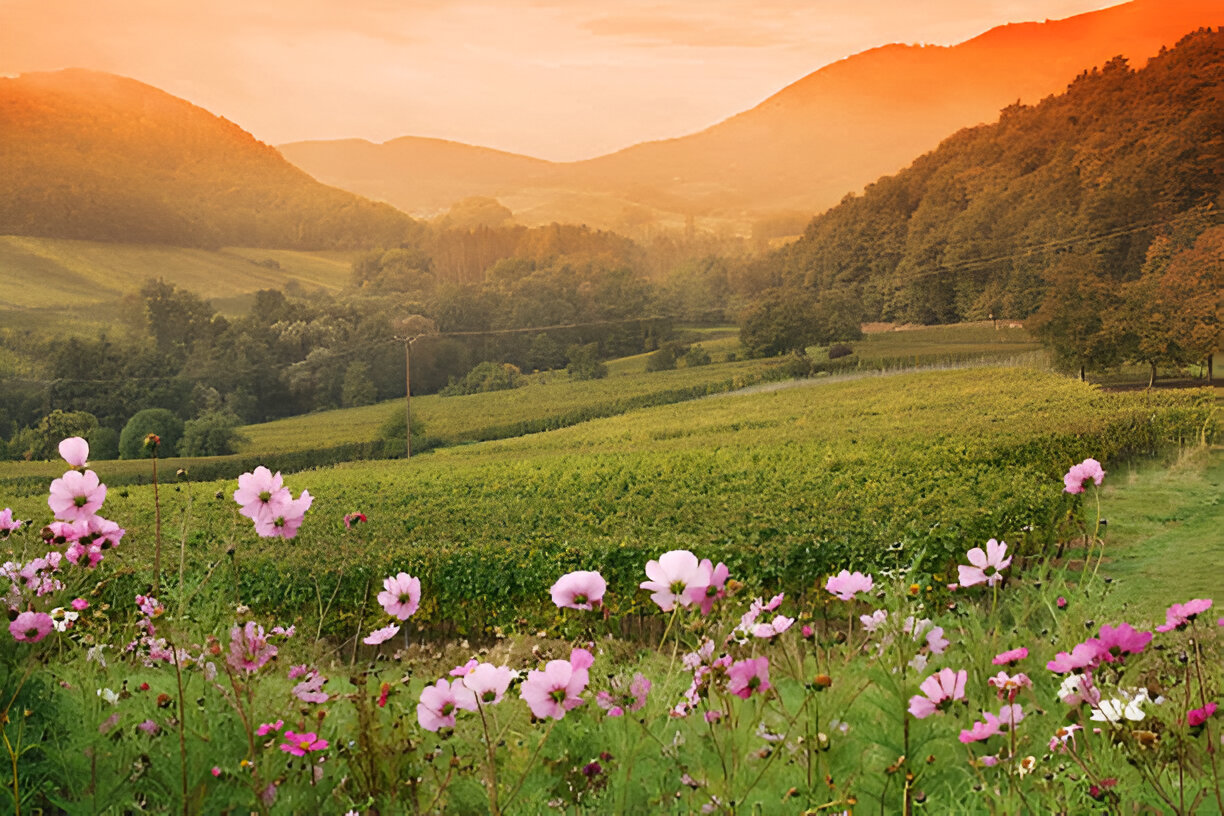
Wineries and Cellar Doors
With over 150 wineries and 80 cellar doors, the Barossa is a wine lover’s paradise:
- Penfolds Barossa Valley Cellar Door: Explore the birthplace of Australia’s iconic Grange wine. You can even try your hand at blending your own wine in their Make Your Own Blend experience.
- Seppeltsfield Winery: Step back in time at this historic estate, famous for its Centennial Cellar, where you can taste tawny port from the year of your birth.
- Jacob’s Creek Visitor Centre: Offering interactive displays, wine tastings, and cooking classes, it’s a fantastic introduction to the region’s winemaking heritage.
- Henschke: A short drive to Eden Valley brings you to this family-owned winery, known for their Hill of Grace vineyard and exceptional Rieslings.
Culinary Delights
The Barossa’s food scene is just as impressive as its wines:
- Maggie Beer’s Farm Shop: Visit the home of one of Australia’s most beloved cooks. Sample her range of products, watch cooking demonstrations, and enjoy lunch overlooking the tranquil lake.
- Barossa Farmers Market: Held every Saturday morning in Angaston, it’s the perfect place to mingle with locals, taste artisanal produce, and pick up gourmet goodies.
- Appellation at The Louise: Indulge in a fine dining experience that showcases the best of local, seasonal ingredients paired with outstanding wines.
Cultural Experiences
Immerse yourself in the rich tapestry of Barossa’s heritage:
- Heritage Towns: Wander through charming towns like Tanunda, Angaston, and Nuriootpa, where German and English influences are reflected in the architecture, churches, and traditions.
- Lyndoch Lavender Farm: Stroll through fields of aromatic lavender, enjoy lavender-infused treats, and browse handcrafted products.
- Barossa Museum and Interpretive Centre: Delve into the region’s history, from Indigenous heritage to early European settlement and the evolution of the wine industry.
Outdoor Activities
Beyond vineyards and cellars, the Barossa offers plenty of ways to enjoy the great outdoors:
- Cycling Trails: The Barossa Trail provides a network of cycling paths that meander through vineyards and villages. Bike hire is readily available, making it easy to explore at your own pace.
- Hot Air Ballooning: Greet the sunrise from the skies with a hot air balloon ride, offering breathtaking panoramic views of the valley’s patchwork of vineyards and farmland.
- Conservation Parks: Explore the natural beauty of Kaiserstuhl Conservation Park or Para Wirra Conservation Park, where walking trails wind through native bushland rich with wildlife.
Accommodation
From luxury retreats to cosy cottages, there’s something for every traveller:
- The Louise: A luxury lodge boasting stunning vineyard views, sophisticated suites, and exceptional dining at its on-site restaurant.
- Novotel Barossa Valley Resort: Offers comfortable rooms, a day spa, golf course, and proximity to Jacob’s Creek vineyards.
- Barossa Vineyard Cottages: Enjoy the charm of self-contained stone cottages nestled among the vines, complete with wood-burning fireplaces.
Practical Tips
- Best Time to Visit: The Barossa is beautiful year-round, but visiting during the vintage season (February to April) offers a chance to see the grape harvest in action and enjoy lush vineyard vistas.
- Transport: If you’re planning to indulge in wine tastings, consider joining a tour or hiring a driver. This allows you to fully enjoy the experience safely.
- Reservations: Popular wineries and restaurants can book out, especially on weekends and during festivals. It’s wise to make reservations in advance.
Festivals and Events
The Barossa’s vibrant community spirit shines through its festivals:
- Barossa Vintage Festival: Held biennially, it’s the oldest wine festival in Australia, celebrating the end of the grape harvest with events, parades, and feasts.
- Barossa Gourmet Weekend: A food and wine extravaganza featuring special tastings, masterclasses, and live music across various venues.
Beyond the Barossa
While the Barossa could easily keep you captivated, there are nearby attractions worth exploring:
- Clare Valley: Known for its world-class Rieslings and the scenic Riesling Trail for cycling enthusiasts.
- Adelaide Hills: Explore cool-climate wineries, charming towns like Hahndorf (Australia’s oldest surviving German settlement), and nature trails.
- Kangaroo Island: A short flight or ferry ride brings you to an island renowned for its wildlife, pristine beaches, and remarkable rock formations.
Must-Do Activities:
- Visit local wineries like Penfolds and Jacob’s Creek
- Enjoy a gourmet food and wine pairing experience
- Explore the charming town of Tanunda
Kangaroo Island, South Australia: Wildlife and Wilderness
Kangaroo Island is a year-round destination, but July offers a unique chance to see wildlife in its natural habitat. The cooler weather means fewer tourists, giving you a more intimate experience with nature.
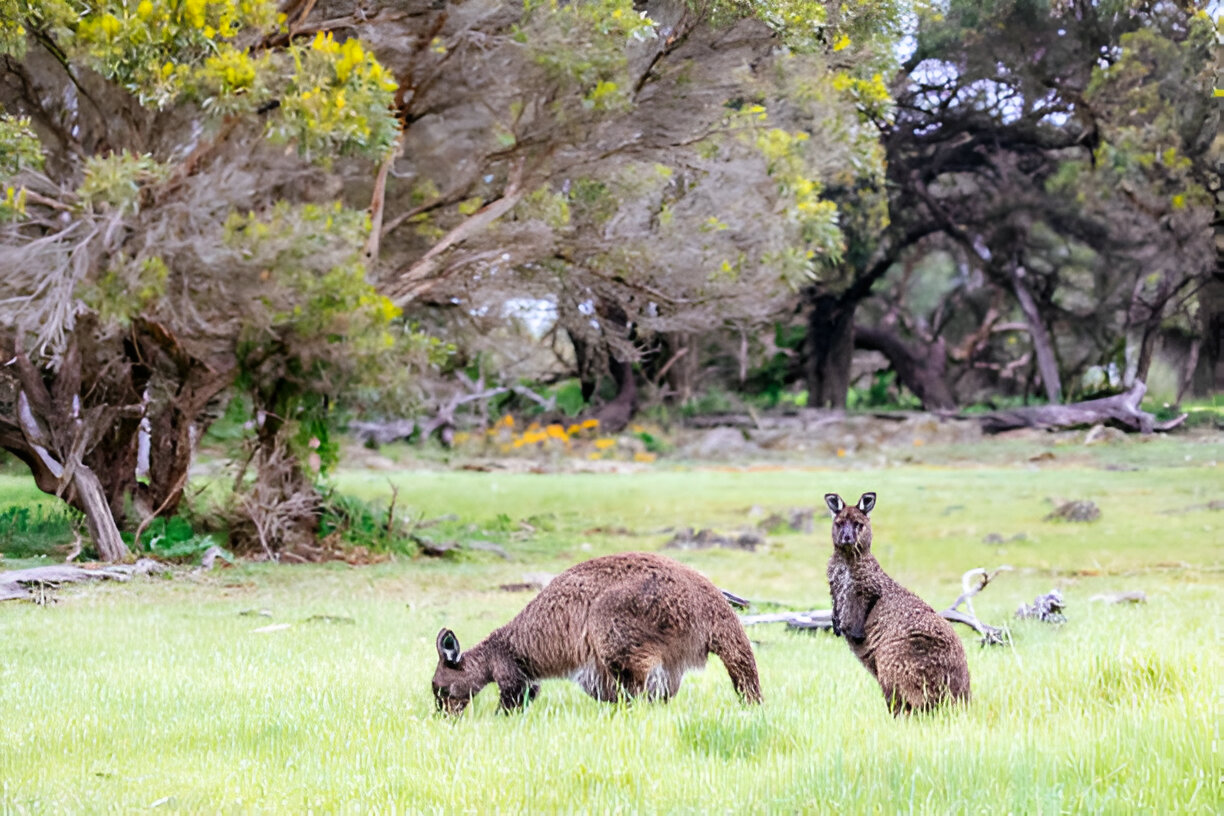
Getting There
- By Ferry: The most popular way to reach KI is via the SeaLink ferry from Cape Jervis to Penneshaw. The scenic crossing takes about 45 minutes, and you can bring your car along for ultimate freedom to explore.
- By Air: For a quick journey, Rex Airlines operates flights from Adelaide Airport to Kingscote Airport, getting you there in just 30 minutes.
Wildlife Wonders
Kangaroo Island is often dubbed Australia’s Galápagos due to its abundant and accessible wildlife:
- Kangaroos and Wallabies: True to its name, you’ll encounter these iconic creatures hopping freely across the island, especially around dawn and dusk.
- Seal Bay Conservation Park: Home to a large colony of endangered Australian sea lions. Join a guided beach tour to observe these playful animals in their natural habitat.
- Koala Spotting: Head to Hanson Bay Wildlife Sanctuary or wander through Vivonne Bay to spot koalas lounging in eucalyptus trees.
- Birdlife: Bird enthusiasts will delight in sightings of rare species like the Glossy Black Cockatoo and the Osprey.
Natural Attractions
- Flinders Chase National Park: Discover the remarkable recovery of this park after the 2020 bushfires. Don’t miss:
- Remarkable Rocks: Granite boulders sculpted by nature into otherworldly shapes perched atop a granite outcrop.
- Admirals Arch: A stunning natural archway framing the ocean, often with New Zealand fur seals basking below.
- Little Sahara: Experience the thrill of sandboarding or tobogganing on expansive white sand dunes—an adventure for all ages.
- Kelly Hill Caves: Explore fascinating limestone cave systems adorned with stalactites and stalagmites on a guided tour.
Adventure Activities
- Hiking: The island boasts numerous trails, from leisurely walks to the multi-day Kangaroo Island Wilderness Trail, showcasing diverse landscapes and coastal views.
- Water Sports: Kayaking, snorkelling, and diving opportunities abound:
- Emu Bay: Known for clear waters perfect for swimming and spotting marine life.
- Stokes Bay: A hidden beach accessible through a rock tunnel, ideal for a secluded dip.
- Quad Biking: Take an exhilarating ride through bushland and open plains with KI Outdoor Action, suitable for beginners and experienced riders alike.
Culinary Delights
Kangaroo Island is a foodie’s haven, celebrating fresh, local produce:
- Seafood: Savour freshly caught King George whiting, oysters from the pristine waters of American River, and succulent marron (freshwater crayfish).
- Artisan Produce: Visit Clifford’s Honey Farm to taste honey from the world’s only pure strain of Ligurian bees. Don’t miss the honey ice cream!
- Wineries and Breweries:
- Bay of Shoals Wines: Enjoy tastings with panoramic views over the vineyard to the ocean.
- Kangaroo Island Spirits: Indulge in award-winning gin, vodka, and liqueurs crafted with native botanicals.
- Farm Gates: Stop by Island Pure Sheep Dairy for delicious cheeses and yoghurts, and Emu Ridge Eucalyptus for locally made oils and skincare products.
Accommodation
Whether you crave luxury or a rustic retreat, KI has you covered:
- Luxury Lodges:
- Sea Dragon Lodge & Villas: Offers private beach access and ocean views.
- Ecopia Retreat: Sustainable luxury accommodation nestled in the heart of the island.
- Boutique Stays:
- Stranraer Homestead: Experience country hospitality in a historic farmhouse.
- Camping and Glamping:
- Western KI Caravan Park: Stay close to nature with camping sites and cabins near Flinders Chase.
- Vivonne Bay Camping Ground: For beach lovers seeking a back-to-basics experience.
Practical Tips
- Best Time to Visit:
- Autumn (March to May) and Spring (September to November) offer mild weather and vibrant wildlife activity.
- Summer (December to February) is warmer but perfect for beach activities.
- Wildlife Safety:
- Drive cautiously, especially at dawn and dusk when animals are most active near roads.
- Keep a respectful distance from wildlife; use binoculars for a closer look without disturbing them.
- Bushfire Awareness:
- Stay informed about local conditions, especially during fire season. Check the CFS website for updates.
- Connectivity:
- Mobile reception can be limited in some areas. Embrace the chance to disconnect and plan accordingly.
Beyond the Highlights
- Emu Bay Lavender Farm: Stroll through fragrant lavender fields and enjoy lavender-infused treats at the café.
- Raptor Domain: Get up close with birds of prey and reptiles in interactive presentations—not a zoo, but a rehabilitation centre focused on education and conservation.
- Penneshaw Maritime and Folk Museum: Dive into the island’s maritime history and early settlement stories.
Must-Do Activities:
- Spot seals at Seal Bay Conservation Park
- Explore Flinders Chase National Park
- Sample local produce, including honey and seafood
The Kimberley, Western Australia: Rugged and Remote Beauty
The Kimberley region is best visited in July when the weather is dry and pleasant. This remote area offers stunning landscapes, from gorges to waterfalls.
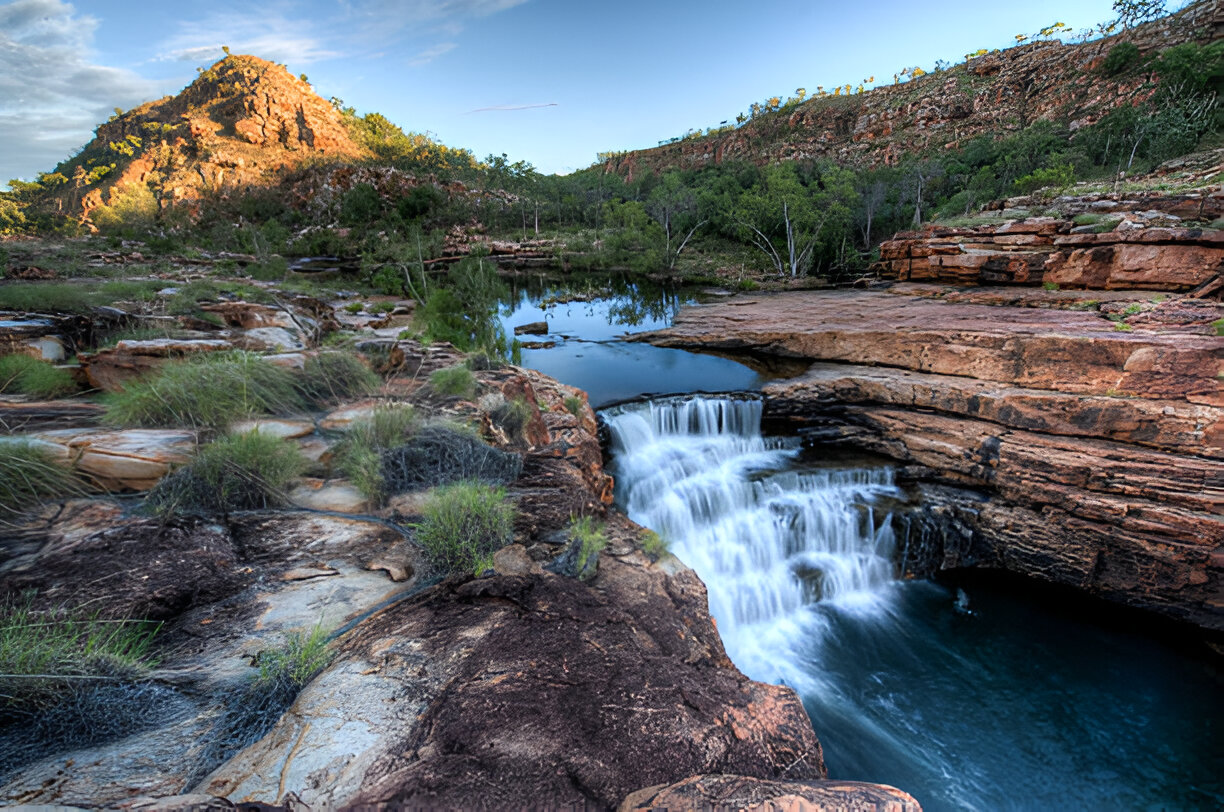
Getting There
- By Air: The primary gateway to the Kimberley is Broome, with regular flights from major cities like Perth, Sydney, and Melbourne. Kununurra is another key entry point, particularly for exploring the eastern Kimberley.
- By Road: The legendary Gibb River Road, a 660-kilometre track, offers a thrilling drive through the heart of the Kimberley. A 4WD vehicle is essential for navigating the rugged terrain.
Natural Wonders
Bungle Bungle Range (Purnululu National Park): These striking, beehive-shaped sandstone formations are a UNESCO World Heritage site. Explore the park on foot with scenic walks such as Cathedral Gorge and Echidna Chasm, or take a scenic flight for a bird’s-eye view.
Horizontal Falls: Described by David Attenborough as “one of the greatest natural wonders of the world,” these fast-moving tidal currents create the illusion of horizontal waterfalls. Experience them up close on a thrilling boat tour or scenic flight.
Mitchell Falls: This spectacular four-tiered waterfall is best reached by a combination of driving and hiking. A scenic helicopter flight offers another stunning perspective of the falls and surrounding wilderness.
Adventure Activities
- Gibb River Road: Embark on an epic road trip along this iconic route, with stops at gorges, waterfalls, and cattle stations. Highlights include Bell Gorge, Manning Gorge, and El Questro Wilderness Park.
- Cruising the Kimberley Coast: Luxury cruises offer an intimate way to explore the remote coastline, with opportunities to see ancient rock art, secluded beaches, and abundant marine life.
- Fishing: The Kimberley’s rivers and coastline are a paradise for anglers, with species like barramundi, threadfin salmon, and mud crabs on offer. Guided fishing tours are available for all skill levels.
Cultural Heritage
- Aboriginal Rock Art: The Kimberley is home to some of the oldest and most significant rock art in the world. Explore the Wandjina and Gwion Gwion (Bradshaw) art sites with Indigenous guides for a deeper understanding of their cultural significance.
- Mowanjum Art and Culture Centre: Located near Derby, this centre showcases the art and culture of the Worrorra, Ngarinyin, and Wunumbal peoples. It offers a range of exhibitions, workshops, and cultural experiences.
Where to Stay
From luxury lodges to outback camping, the Kimberley offers a range of accommodation options:
- El Questro: This vast wilderness park offers a variety of accommodation, from luxury homestead stays to riverside camping.
- Berkeley River Lodge: Accessible only by air or sea, this remote luxury lodge offers stunning views, gourmet dining, and personalised experiences.
- Kimberley Coastal Camp: Located on the remote Admiralty Gulf, this exclusive camp offers a unique blend of adventure, luxury, and cultural immersion.
Practical Tips
- Best Time to Visit: The dry season (May to October) is the ideal time to explore the Kimberley, with pleasant weather and accessible roads. The wet season (November to April) brings heavy rains, making many areas inaccessible.
- Travel Preparedness: The Kimberley is remote and rugged, so ensure you’re well-prepared with supplies, a reliable 4WD vehicle, and knowledge of the area’s conditions. Inform someone of your travel plans before heading out.
- Respect for Culture: Always seek permission before visiting rock art sites and adhere to cultural protocols. Engage with Indigenous guides to gain a deeper appreciation of the land and its heritage.
Must-Do Activities:
- Cruise through the Buccaneer Archipelago
- Visit the Bungle Bungle Range in Purnululu National Park
- Explore Windjana Gorge and Tunnel Creek
Canberra, Australian Capital Territory: Winter Festivals and Culture
Australia’s capital might be chilly in July, but it’s brimming with cultural attractions and winter festivals. Warm up in a museum or enjoy the city’s vibrant food scene.
Canberra is easily accessible via Canberra Airport, with regular flights from major Australian cities and some international destinations. The city is also well-connected by road and rail, making it convenient for visitors travelling by car or train from Sydney and Melbourne.
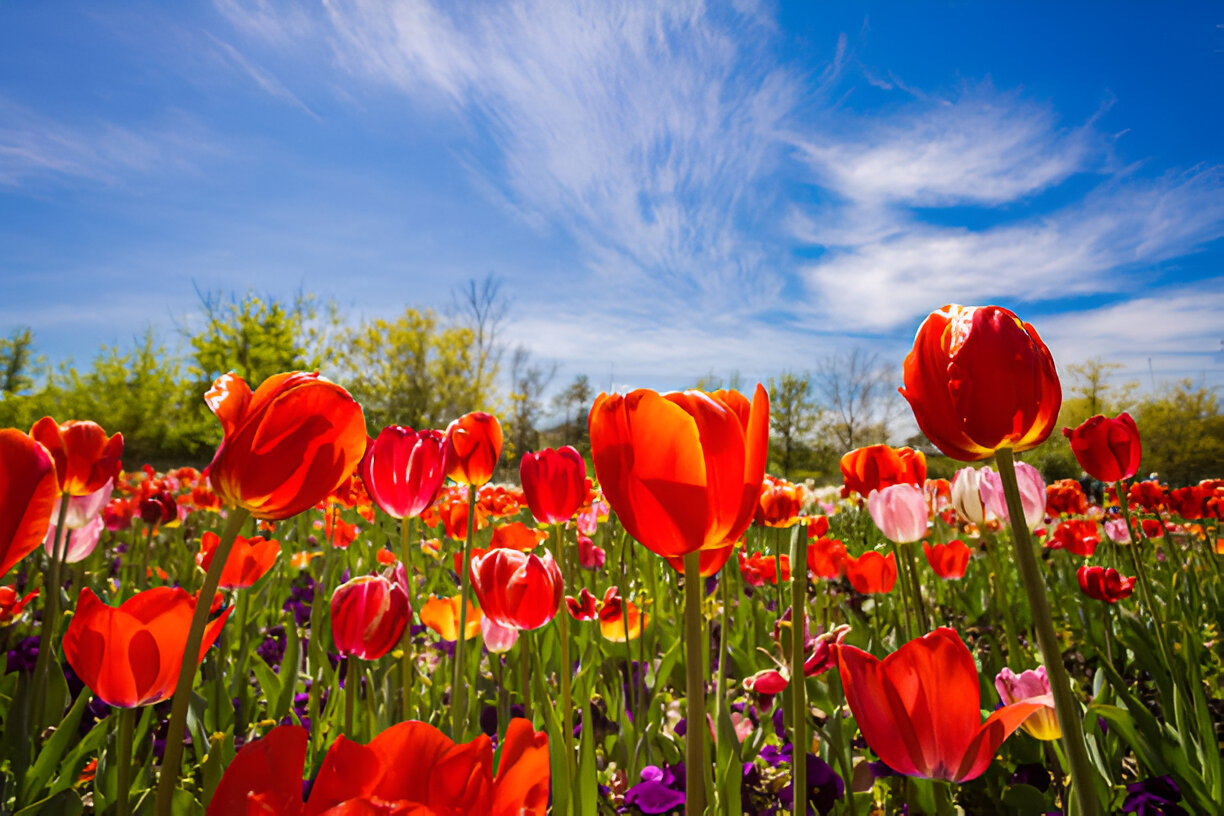
Top Attractions
Australian War Memorial: This poignant and impressive memorial honours the sacrifice of Australians who have served in armed conflicts. The War Memorial combines a shrine, a world-class museum, and an extensive archive, offering a profound and educational experience. Don’t miss the Last Post Ceremony held daily at 4:45 PM.
Parliament House: As the seat of Australia’s federal government, Parliament House is a must-visit. Take a guided tour to learn about the building’s architecture, history, and the Australian political system. You can also observe Question Time in the House of Representatives or the Senate.
National Gallery of Australia: Home to an extensive collection of Australian and international art, the National Gallery showcases works from Indigenous Australian artists, European masters, and contemporary creatives. The Sculpture Garden is also a serene spot to explore.
Questacon – The National Science and Technology Centre: A fantastic destination for families, Questacon offers interactive exhibits and hands-on activities that make science and technology fun and engaging for all ages.
Lake Burley Griffin: This man-made lake is the heart of Canberra, offering a range of recreational activities. Rent a bike or take a leisurely stroll along the lakeside paths, enjoy a paddleboat ride, or simply relax with a picnic while taking in the scenic views.
Cultural Experiences
National Museum of Australia: This museum provides a comprehensive look at Australia’s social history, exploring themes such as Indigenous culture, settlement, and modern-day achievements. Engaging exhibits and interactive displays make it a fascinating visit.
National Library of Australia: Discover Australia’s literary treasures and historical documents at the National Library. The Treasures Gallery and various exhibitions showcase rare books, manuscripts, and artworks.
Australian National Botanic Gardens: These gardens feature the largest living collection of Australian native plants. Wander through themed sections, such as the Rainforest Gully and the Red Centre Garden, and enjoy the peaceful natural setting.
Outdoor Activities
Mount Ainslie: For panoramic views of Canberra, hike or drive to the summit of Mount Ainslie. The lookout provides a stunning vantage point, especially at sunrise or sunset, offering a perfect photo opportunity.
Tidbinbilla Nature Reserve: Located just outside Canberra, Tidbinbilla offers excellent wildlife spotting opportunities and scenic walking trails. Look out for koalas, kangaroos, and the elusive platypus in their natural habitat.
Namadgi National Park: This park covers a significant portion of the ACT and offers diverse landscapes, from alpine meadows to rugged mountains. Enjoy bushwalking, rock climbing, and camping in this pristine wilderness area.
Culinary Delights
Local Markets: Canberra’s markets, such as the Old Bus Depot Markets and the Capital Region Farmers Market, are great places to sample local produce, artisanal foods, and handcrafted goods.
Braddon Precinct: This trendy neighbourhood is known for its eclectic mix of cafes, restaurants, and bars. Enjoy a brunch at one of the hip cafes or dine at a chic eatery serving contemporary Australian cuisine.
Wineries: The Canberra district is home to several award-winning wineries. Take a day trip to the nearby vineyards to sample cool-climate wines and enjoy the picturesque countryside.
Accommodation
Canberra offers a range of accommodation options to suit all budgets:
- Luxury Hotels: For a luxurious stay, consider the Hotel Realm or the Hyatt Hotel Canberra, both offering elegant rooms and top-notch amenities.
- Boutique Stays: QT Canberra and Ovolo Nishi provide stylish and unique accommodations with a modern flair.
- Budget-Friendly: There are plenty of budget hotels, motels, and hostels available for cost-conscious travellers, such as the YHA Canberra City Hostel.
Practical Tips
- Best Time to Visit: Canberra experiences four distinct seasons, with each offering its own charm. Spring (September to November) and autumn (March to May) are particularly pleasant, with mild temperatures and beautiful foliage.
- Transport: Canberra is a compact city, making it easy to explore by foot, bike, or public transport. The free Culture Loop shuttle bus connects major attractions, and bike rentals are widely available.
- Festivals: Canberra hosts a variety of festivals and events throughout the year, such as the Canberra Balloon Spectacular, Enlighten Festival, and Floriade, the city’s annual flower festival.
Must-Do Activities:
- Explore the National Gallery of Australia
- Visit the Australian War Memorial
- Enjoy the Fireside Festival in the surrounding Canberra Wine Region
Gold Coast, Queensland: Mild Winter Beach Fun
The Gold Coast in July offers mild weather, making it perfect for beach activities without the summer crowds. It’s also a great time for whale watching as the humpbacks migrate along the coast.
The Gold Coast is served by Gold Coast Airport, with regular domestic and international flights. Located in Coolangatta, the airport is just a short drive from the city’s main attractions. Brisbane Airport is also an option, with a convenient train or shuttle transfer to the Gold Coast.
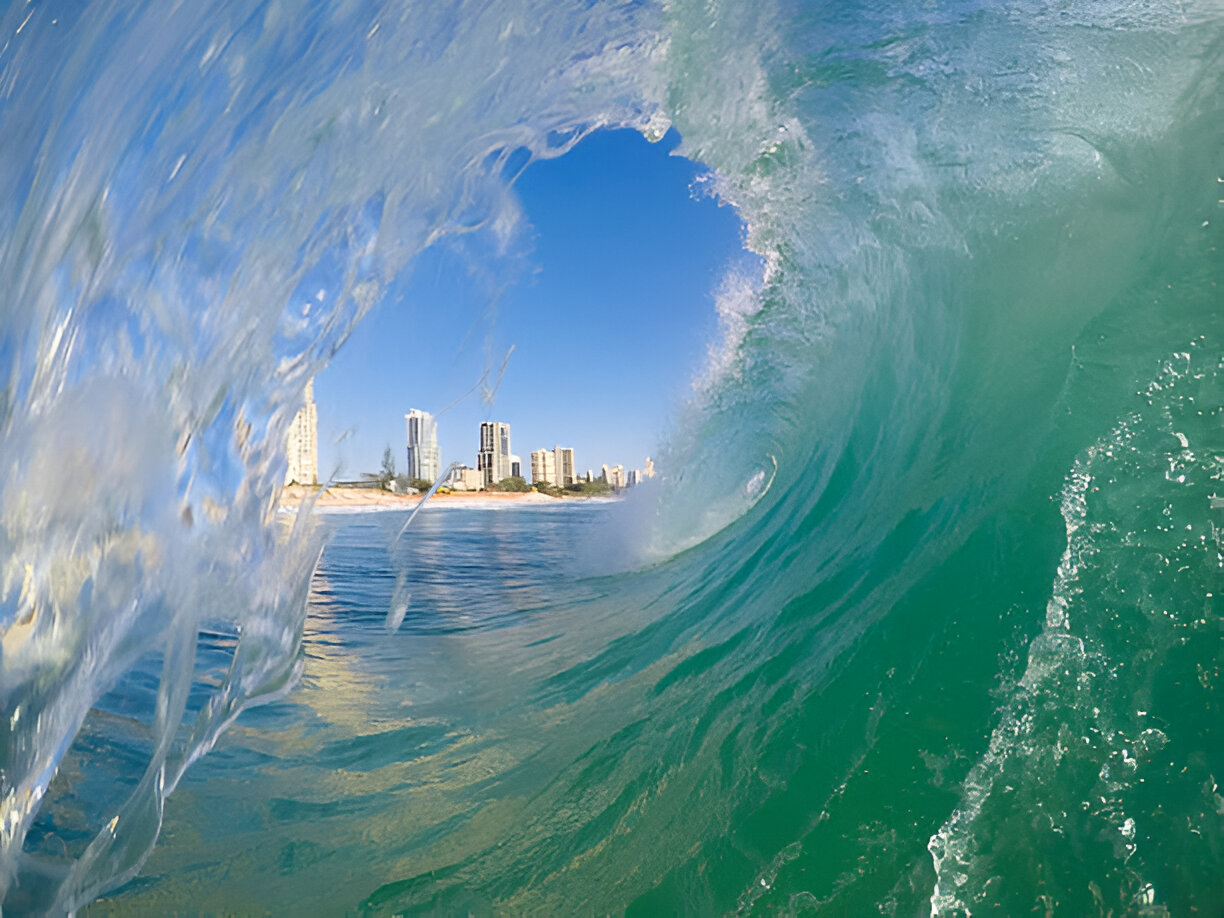
Top Attractions
Surfers Paradise: The heart and soul of the Gold Coast, Surfers Paradise is known for its iconic skyline, bustling beachfront, and vibrant nightlife. Relax on the golden sands, take a surf lesson, or explore the lively Cavill Avenue with its shops, restaurants, and bars.
Theme Parks: The Gold Coast is famous for its world-class theme parks:
- Dreamworld: Enjoy thrilling rides, live shows, and encounters with Australian wildlife at this expansive park.
- Warner Bros. Movie World: Experience the magic of Hollywood with movie-themed rides, live performances, and character meet-and-greets.
- Sea World: Discover marine life exhibits, thrilling rides, and entertaining shows featuring dolphins, seals, and more.
- Wet’n’Wild: Cool off at this water park, featuring an array of water slides, wave pools, and lazy rivers.
Lamington National Park: Escape to the lush rainforest of Lamington National Park, part of the Gondwana Rainforests of Australia World Heritage Area. Enjoy bushwalking, birdwatching, and the stunning views from the Tree Top Walkway.
Currumbin Wildlife Sanctuary: Get up close with Australia’s native animals at this beloved sanctuary. Hand-feed kangaroos, cuddle a koala, and watch thrilling wildlife shows.
Adventure Activities
The Gold Coast offers an array of outdoor adventures for thrill-seekers:
- Surfing: The Gold Coast is renowned for its surf breaks, including Burleigh Heads, Snapper Rocks, and Kirra Beach. Lessons are available for beginners.
- Skydiving: Experience the ultimate adrenaline rush with a tandem skydive over the Gold Coast, taking in breathtaking views of the coastline and hinterland.
- Jet Boating: Hop on a jet boat for an exhilarating ride through the Gold Coast’s waterways, complete with high-speed spins and turns.
- Hiking: Explore the scenic trails of the Gold Coast Hinterland, including the beautiful Tamborine Mountain and Springbrook National Park.
Dining and Nightlife
The Gold Coast’s culinary scene is as diverse as its attractions:
- Beachfront Dining: Enjoy a meal with a view at one of the many beachfront restaurants and cafes. Popular spots include Burleigh Pavilion, Rick Shores, and Seascape Restaurant.
- Night Markets: Discover the Gold Coast’s night markets, such as the Surfers Paradise Beachfront Markets and the Miami Marketta, offering street food, live music, and local crafts.
- Nightlife: The Gold Coast comes alive after dark with its vibrant nightlife. Dance the night away at popular clubs like The Star Gold Coast, SinCity, and Elsewhere.
Accommodation
From luxury resorts to budget-friendly options, the Gold Coast has accommodation to suit every traveller:
- Luxury Resorts: For a luxurious stay, consider The Star Grand, Palazzo Versace, or Peppers Soul Surfers Paradise.
- Boutique Hotels: QT Gold Coast and The Island offer stylish and unique accommodations with modern amenities.
- Family-Friendly: Sea World Resort and Paradise Resort provide family-friendly facilities and activities to keep the little ones entertained.
Practical Tips
- Best Time to Visit: The Gold Coast enjoys a subtropical climate, with warm temperatures year-round. The best time to visit is during the shoulder seasons of spring (September to November) and autumn (March to May) when the weather is pleasant, and the crowds are thinner.
- Transport: The Gold Coast is well-connected by public transport, including trams, buses, and trains. Car hire is also a convenient option for exploring the region at your own pace.
- Safety: Always swim between the flags at patrolled beaches and follow the lifeguards’ instructions. The Gold Coast’s beaches can have strong currents and rips.
Must-Do Activities:
- Surf at Surfers Paradise or Burleigh Heads
- Visit theme parks like Dreamworld and Sea World
- Go whale watching from the coast or on a tour
Uluru, Northern Territory: The Red Centre’s Winter Magic
Visiting Uluru in July is a unique experience. The cooler weather makes exploring the Red Centre’s iconic landscapes more comfortable, and the clear skies provide stunning star-gazing opportunities.
Uluru is accessible via Ayers Rock Airport (Connellan Airport), which offers regular flights from major Australian cities such as Sydney, Melbourne, and Cairns. The nearby town of Yulara provides accommodation and facilities for visitors. Alternatively, you can embark on a scenic road trip through the Red Centre, with Alice Springs as a starting point.
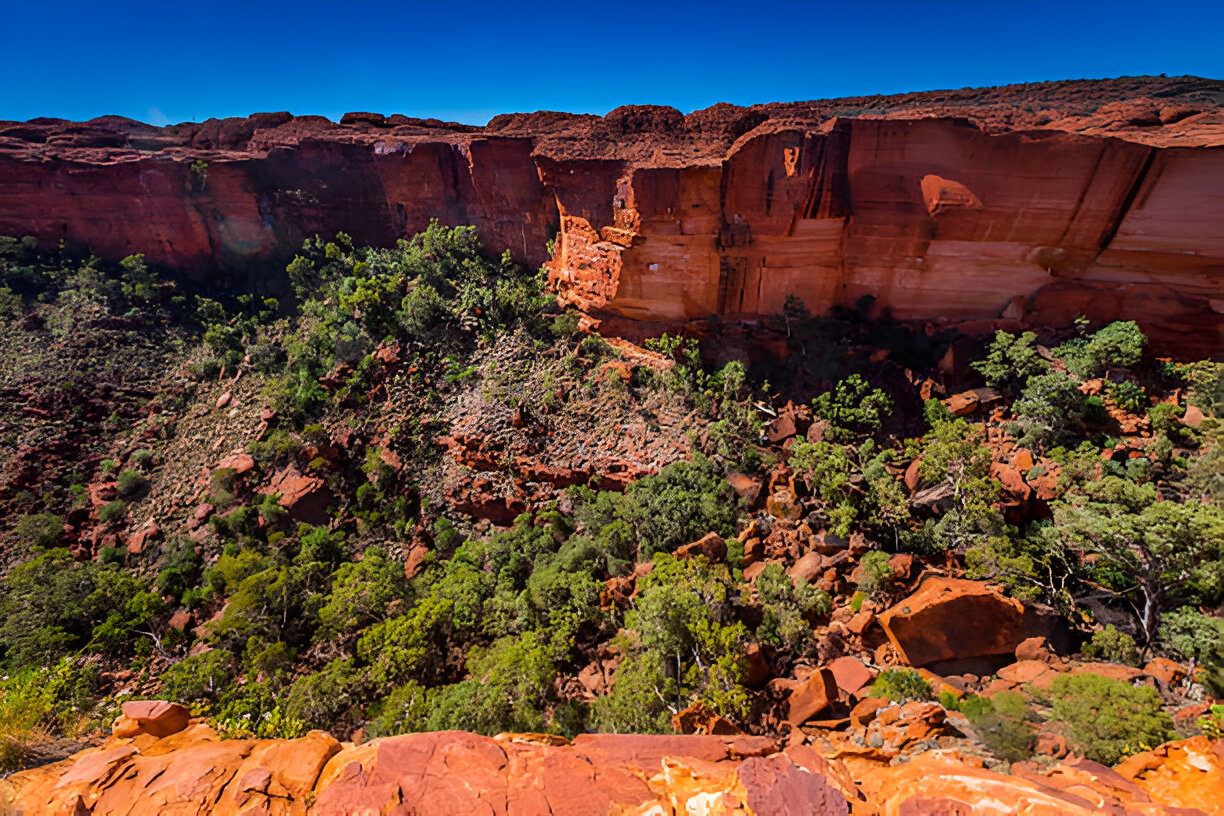
Cultural Significance
Uluru is a sacred site for the Anangu people, who have lived in the region for tens of thousands of years. The monolith is rich with Dreamtime stories, and each rock formation and cave has its own cultural meaning. Visitors are encouraged to learn about and respect the cultural heritage of Uluru by participating in guided tours led by Aboriginal guides, visiting the Uluru-Kata Tjuta Cultural Centre, and following the guidelines to preserve the site’s integrity.
Must-See Attractions
Uluru-Kata Tjuta National Park: This World Heritage-listed park is home to both Uluru and the nearby Kata Tjuta (The Olgas), a group of large domed rock formations. The park offers numerous walking trails, cultural tours, and viewing points to appreciate the beauty and significance of these natural wonders.
Sunrise and Sunset Viewing: One of the most magical experiences at Uluru is witnessing the changing colours of the rock at sunrise and sunset. Viewing areas such as Talinguru Nyakunytjaku provide panoramic views of Uluru and Kata Tjuta, making it the perfect spot for photographers and nature enthusiasts.
Base Walk: The Uluru Base Walk is a 10.6-kilometre loop that takes you around the entire circumference of the rock. This easy-to-moderate walk offers close-up views of Uluru’s unique textures, waterholes, and ancient rock art sites. It’s a fantastic way to immerse yourself in the landscape and learn about its cultural significance.
Mala Walk: This shorter walk takes you along the north-west side of Uluru and includes significant cultural sites such as the Mala Puta and the Kantju Gorge. Guided ranger walks are available, providing insights into the Anangu culture and the natural features of the area.
Adventure Activities
- Field of Light: Created by artist Bruce Munro, the Field of Light is an art installation consisting of 50,000 spindles of light that illuminate the desert landscape. The exhibition is best experienced at sunrise or sunset and offers a mesmerizing and ethereal experience.
- Camel Tours: Explore the desert landscape on a camel ride, led by experienced cameleers who share their knowledge of the flora, fauna, and history of the area. It’s a unique way to see Uluru and its surroundings.
- Scenic Flights: For a breathtaking perspective of Uluru and Kata Tjuta, take a scenic flight. Helicopter and fixed-wing aircraft tours provide stunning aerial views of the vast landscape and its iconic landmarks.
- Stargazing: The remote location of Uluru makes it an excellent spot for stargazing. Join an astronomy tour to learn about the southern hemisphere’s night sky, including constellations, planets, and Indigenous astronomy stories.
Accommodation
Yulara, the resort town near Uluru, offers a range of accommodation options to suit all budgets:
- Luxury Lodges: Longitude 131° provides a luxurious glamping experience with tented pavilions offering stunning views of Uluru. The lodge includes gourmet dining, guided tours, and exclusive access to cultural experiences.
- Hotels and Apartments: Ayers Rock Resort offers various accommodation options, including Sails in the Desert, Emu Walk Apartments, and Desert Gardens Hotel, all providing comfortable stays with modern amenities.
- Campgrounds: Ayers Rock Campground offers powered and unpowered sites for caravans and tents, as well as cabins for those seeking a more budget-friendly option.
Practical Tips
- Climate: Uluru experiences extreme temperatures, with hot summers (December to February) and cool winters (June to August). The best times to visit are during the shoulder seasons of spring (September to November) and autumn (March to May) when temperatures are more moderate.
- Respect the Land: Always stay on designated paths and follow guidelines to protect the cultural and natural heritage of Uluru. Photography is restricted in certain areas, so be mindful of signs and respect the wishes of the Anangu people.
- Hydration and Sun Protection: The desert environment can be harsh, so it’s essential to stay hydrated, wear sunscreen, a hat, and lightweight clothing to protect yourself from the sun.
Must-Do Activities:
- Walk around the base of Uluru
- Experience the Field of Light art installation
- Learn about Aboriginal culture at the Cultural Centre
Margaret River, Western Australia: Gourmet Delights and Coastal Beauty
Margaret River is a food and wine lover’s paradise, and July adds a cosy touch to its charm. Enjoy wine tastings, explore caves, and take in the rugged coastline.
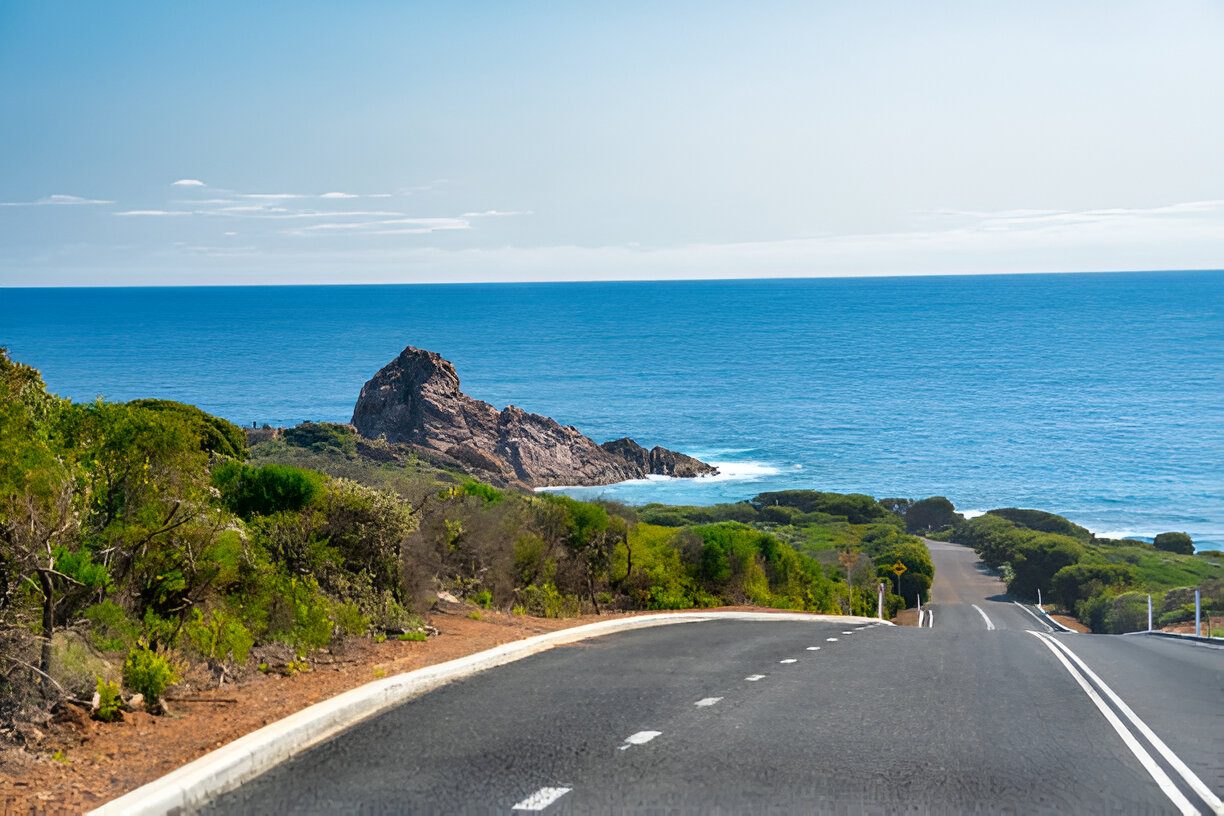
Getting There
Margaret River is approximately 277 kilometers (172 miles) south of Perth, the state capital. You can drive from Perth, or fly into Busselton Airport and then drive about 45 minutes to reach Margaret River. Perth Airport is another option, with car hire available for the journey.
Top Attractions
Surfing: Margaret River is a surfer’s paradise, with world-famous surf breaks like Main Break and The Box. Whether you’re a beginner or a seasoned pro, there’s a wave for everyone.
Wine Tasting: The region is home to some of Australia’s finest wineries. Take a wine tour to explore vineyards like Leeuwin Estate, Vasse Felix, and Cape Mentelle, and enjoy tastings of their award-winning wines.
Caves and Caves Road: Explore the stunning limestone caves at Jewel Cave, Mammoth Cave, and Lake Cave. Caves Road, which runs through the region, offers scenic drives with plenty of stops for cave tours, wineries, and local produce.
Cape to Cape Track: This 135-kilometer walking trail stretches from Cape Leeuwin to Cape Naturaliste and offers breathtaking coastal views, diverse wildlife, and a chance to experience the natural beauty of the region.
Margaret River Pro: Every year, the Margaret River Pro attracts some of the world’s best surfers to compete in this prestigious surfing competition. It’s a great time to visit if you’re a surfing enthusiast.
Adventure Activities
- Kayaking and Stand-Up Paddleboarding: Explore the region’s pristine waters with kayaking and stand-up paddleboarding tours.
- Abseiling and Rock Climbing: For the thrill-seekers, there are abseiling and rock climbing adventures available in the rugged terrain.
- Mountain Biking: The Margaret River region offers a variety of mountain biking trails, catering to different skill levels and preferences.
Cultural Experiences
Margaret River Museum and Gallery: Learn about the history and culture of the region through exhibits and displays at the local museum and gallery.
Wadandi Track: This walking trail connects the towns of Margaret River and Augusta, offering a cultural journey through the land of the Wadandi people, the traditional custodians of the region.
Dining and Nightlife
Local Markets: Visit the Margaret River Farmers Market and the Margaret River Artisan Market to sample fresh produce, gourmet foods, and handmade crafts.
Restaurants and Cafes: Enjoy a meal at one of the many excellent restaurants and cafes in the area, such as The River House Café and Margaret River Distillery, which offer delicious local cuisine and stunning views.
Accommodation
Margaret River offers a range of accommodation options to suit all budgets:
- Luxury Resorts: Stay at luxury resorts like Cape Lodge or The Resort at Margaret River, which offer top-notch amenities and beautiful surroundings.
- Boutique Hotels: For a more intimate experience, consider boutique hotels like The Caves House or The Margaret River Hotel.
- Self-Catering: There are numerous self-catering options, including holiday homes, cottages, and apartments, providing a cozy and convenient stay.
Practical Tips
- Best Time to Visit: The best time to visit Margaret River is during the spring (September to November) and autumn (March to May) months when the weather is mild and pleasant.
- Transport: Renting a car is the most convenient way to explore the region, as public transport options are limited.
- Respect the Environment: The Margaret River region is known for its natural beauty, so it’s important to respect the environment by staying on designated paths, disposing of waste properly, and following local guidelines.
Must-Do Activities:
- Visit local wineries and breweries
- Explore the stunning Ngilgi Cave
- Walk along the Cape to Cape Track
Frequently Asked Questions
1. Is July a good time to visit Australia?
Yes! While southern regions experience winter, northern areas like Queensland and the Northern Territory enjoy warm, dry weather. It’s the perfect time for both snow sports and tropical adventures.
2. Where is the warmest place in Australia in July?
Darwin, Cairns, and the Whitsundays are some of the warmest places, with temperatures averaging around 25–30°C.
3. Can you swim in Australia in July?
Yes, especially in northern regions like Queensland and the Northern Territory where the waters are warm. Southern beaches might be too chilly for a swim.
4. Are there any festivals in Australia in July?
Absolutely! From Darwin Festival to Melbourne’s Winter Night Market and Hobart’s Dark Mofo, there are plenty of winter festivals to enjoy.
5. Is it expensive to travel in Australia in July?
It depends on the region. Ski resorts in the Snowy Mountains can be pricey, while northern destinations might offer off-peak deals.
6. What should I pack for Australia in July?
Pack for both warm and cool weather depending on your destination. Bring layers, a warm jacket for the south, and lighter clothes for the tropical north.
Conclusion: Best Places to Travel in Australia in July
Whether you’re after sun-soaked beaches or snow-capped mountains, Australia in July has something for every traveller. From the tropical warmth of Cairns and Darwin to the winter wonderlands of the Snowy Mountains and Tasmania, the country offers a diverse range of experiences. So, pack your bags and get ready for an unforgettable Aussie winter adventure!

